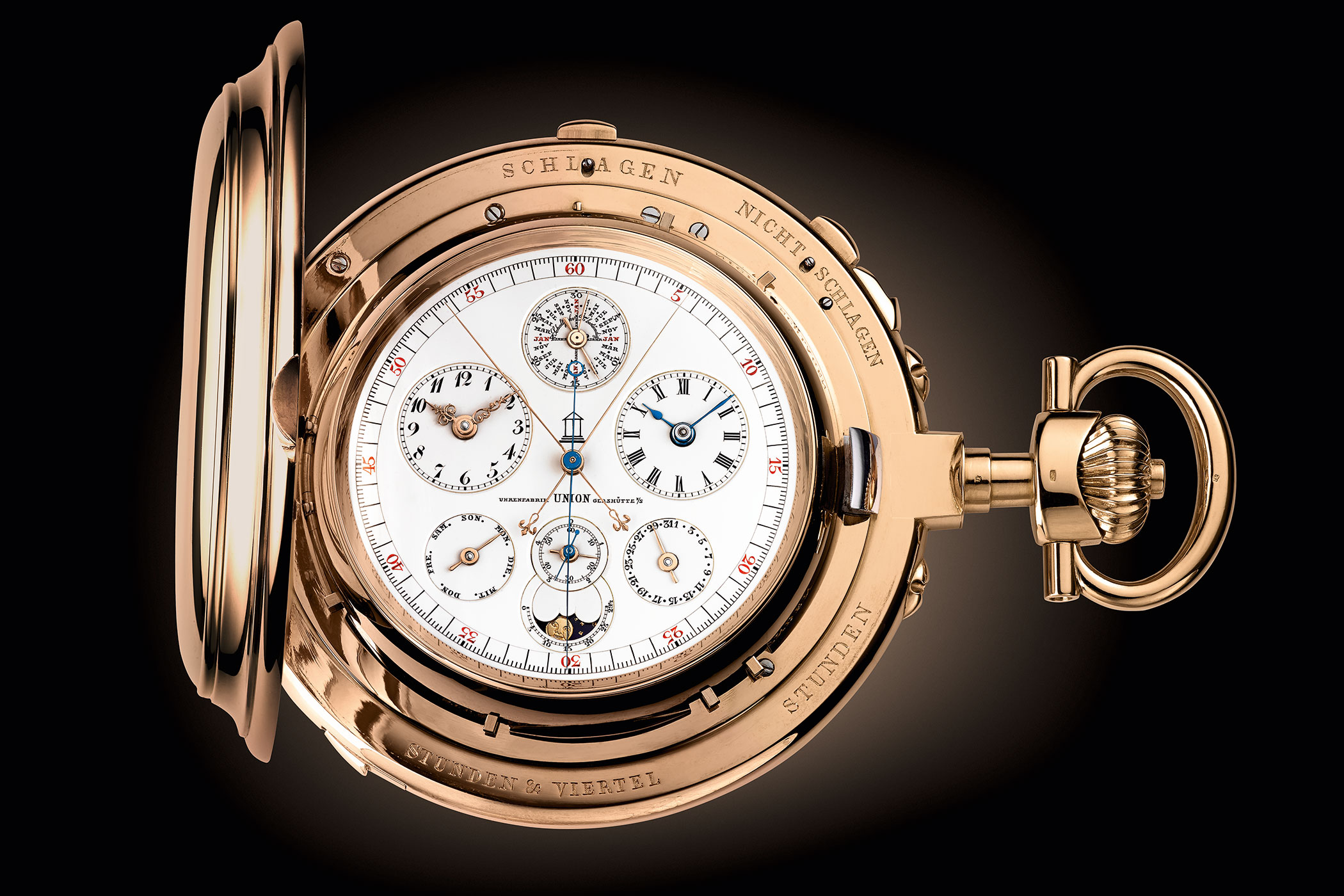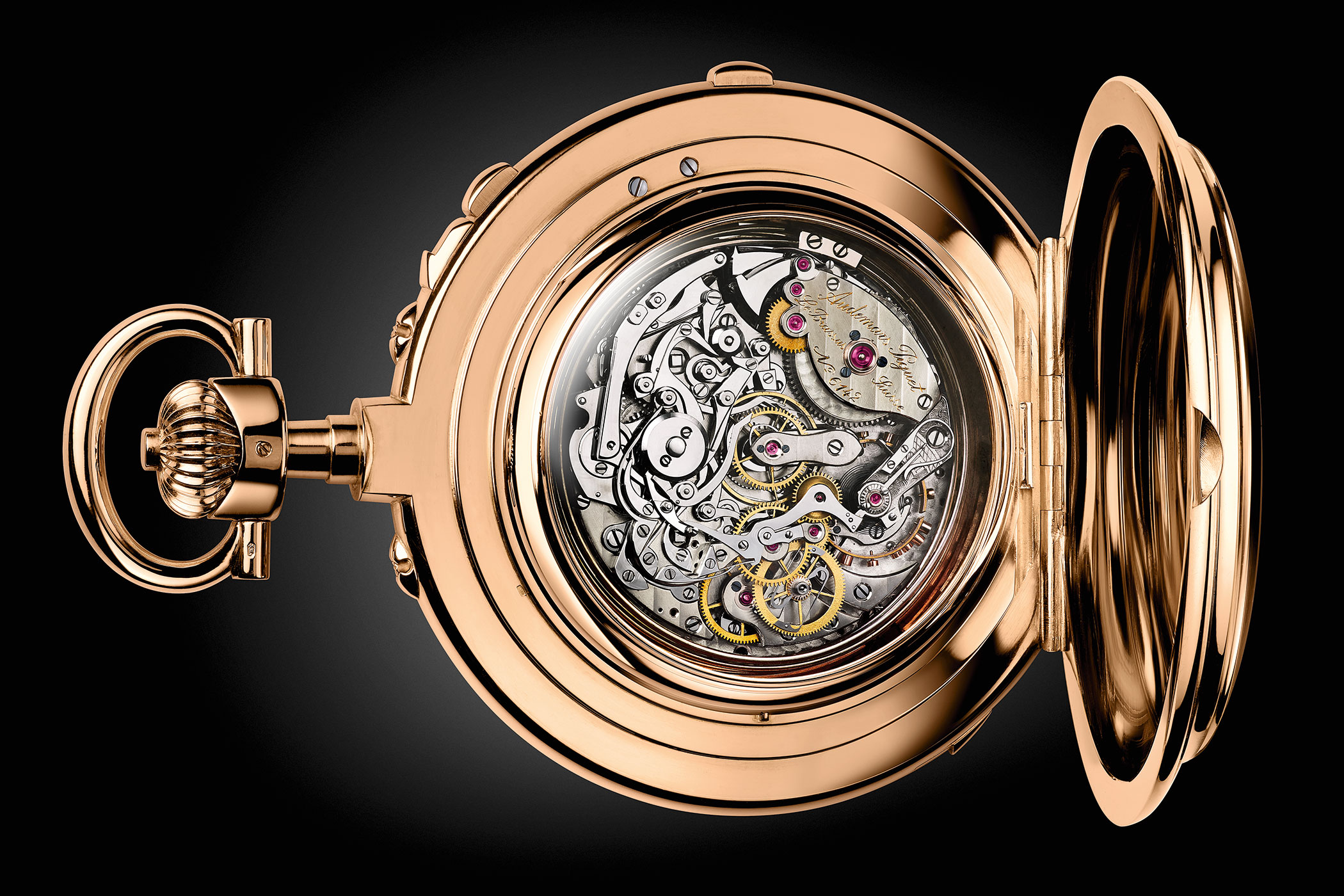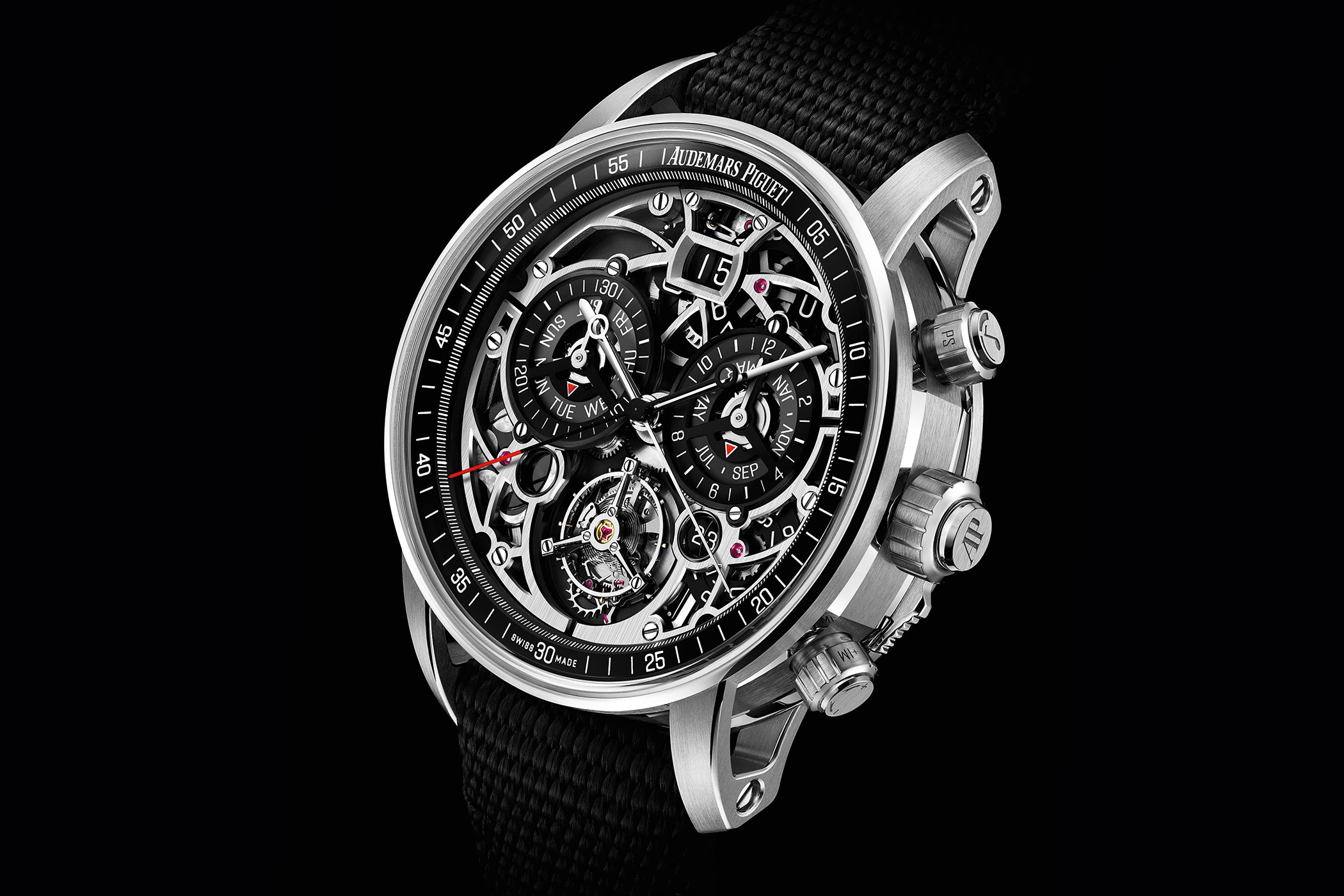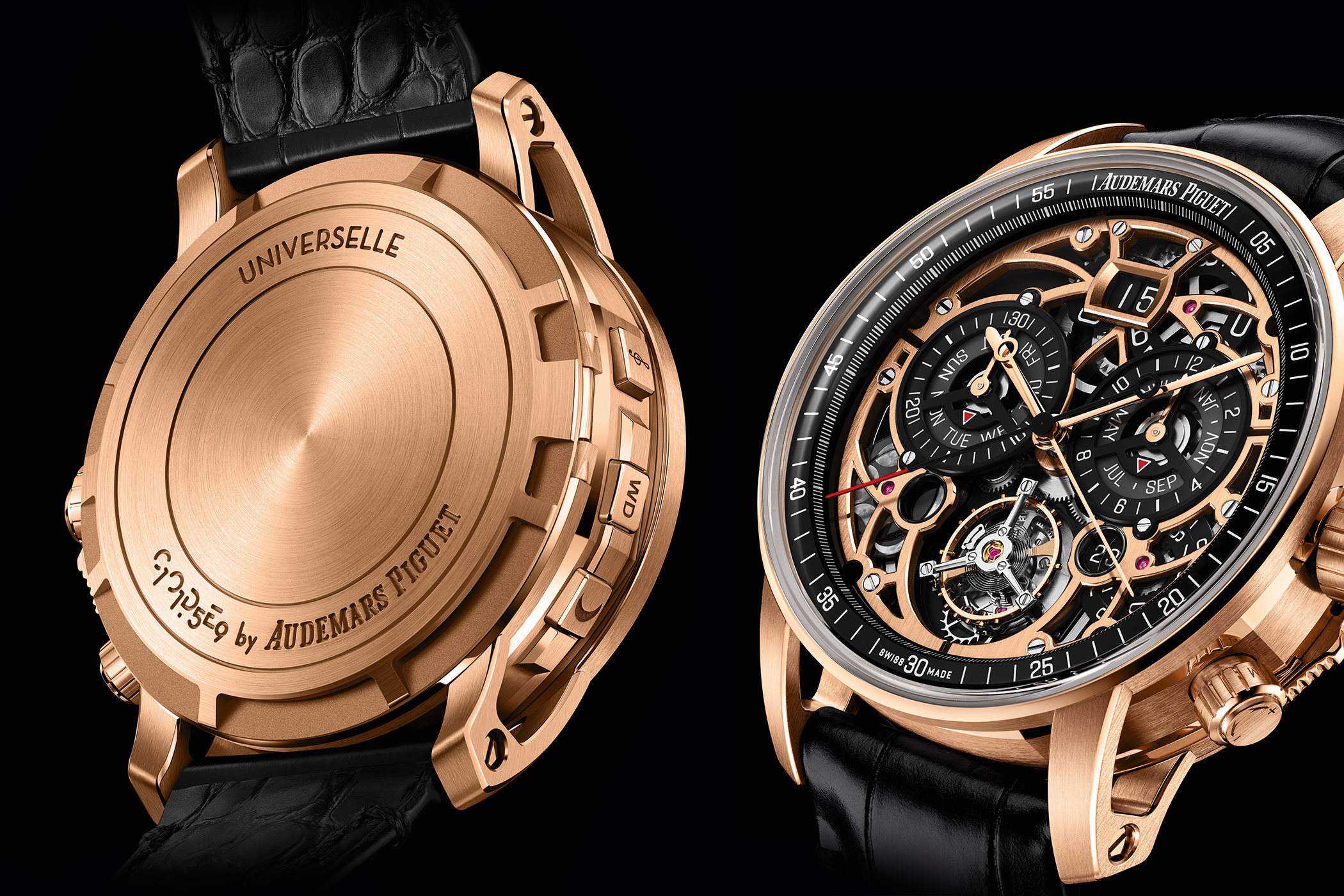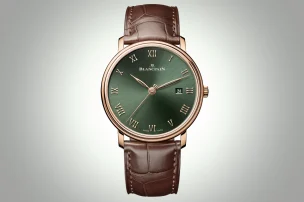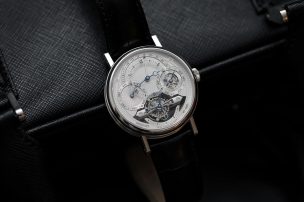
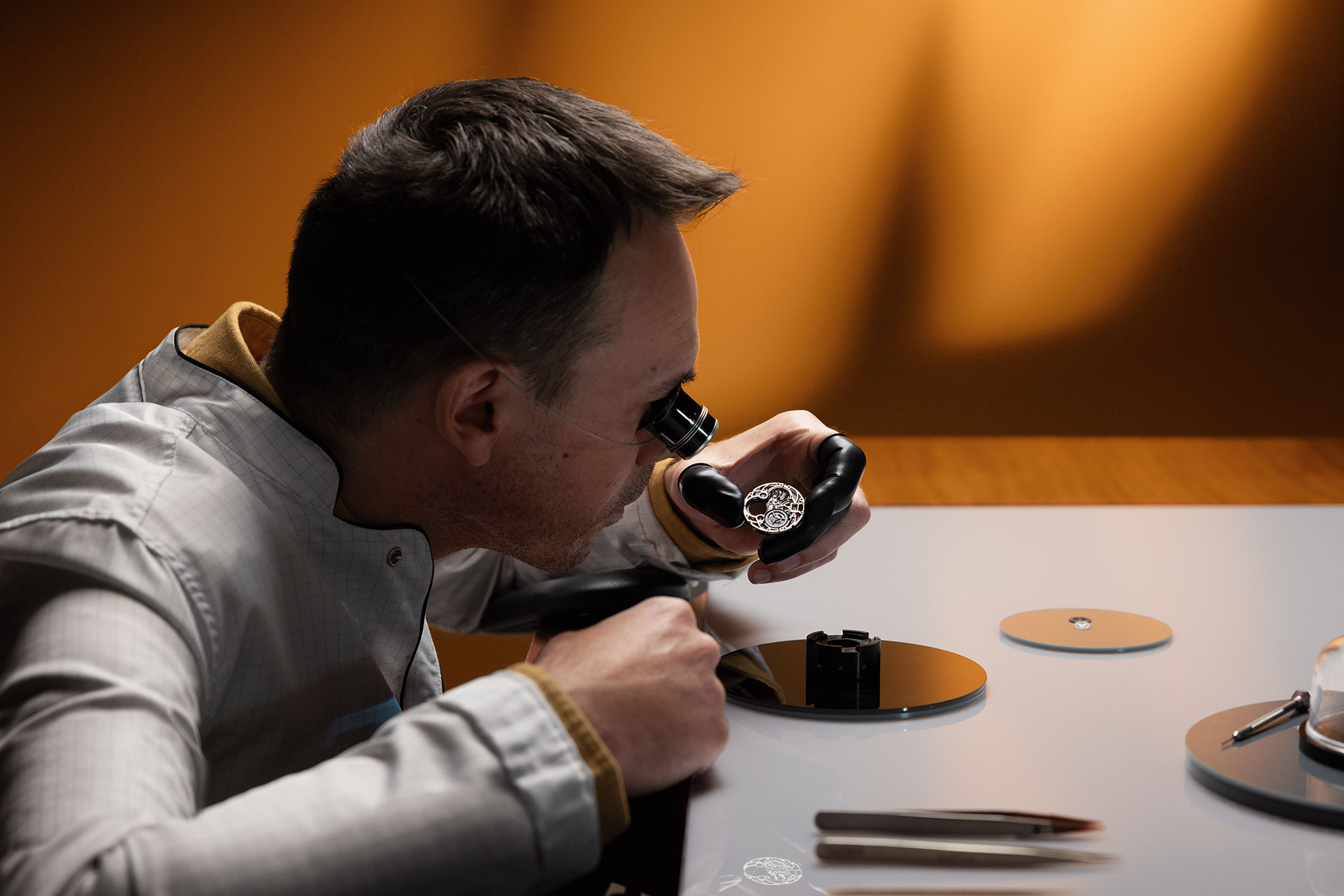
Code 11.59 Universelle RD#4: Audemars Piguet Introduces Its First Ultra-Complicated Automatic Wristwatch
Over a century after the creation of its ultra-complicated Universelle pocket watch, Audemars Piguet is introducing a new interpretation that marks the first ever ultra-complicated self-winding wristwatch, the RD#4, to emerge from the watchmaker. Appearing in a Code 11.59 by Audemars Piguet case, the highly complex watch is impressively ergonomic and highly contemporary.
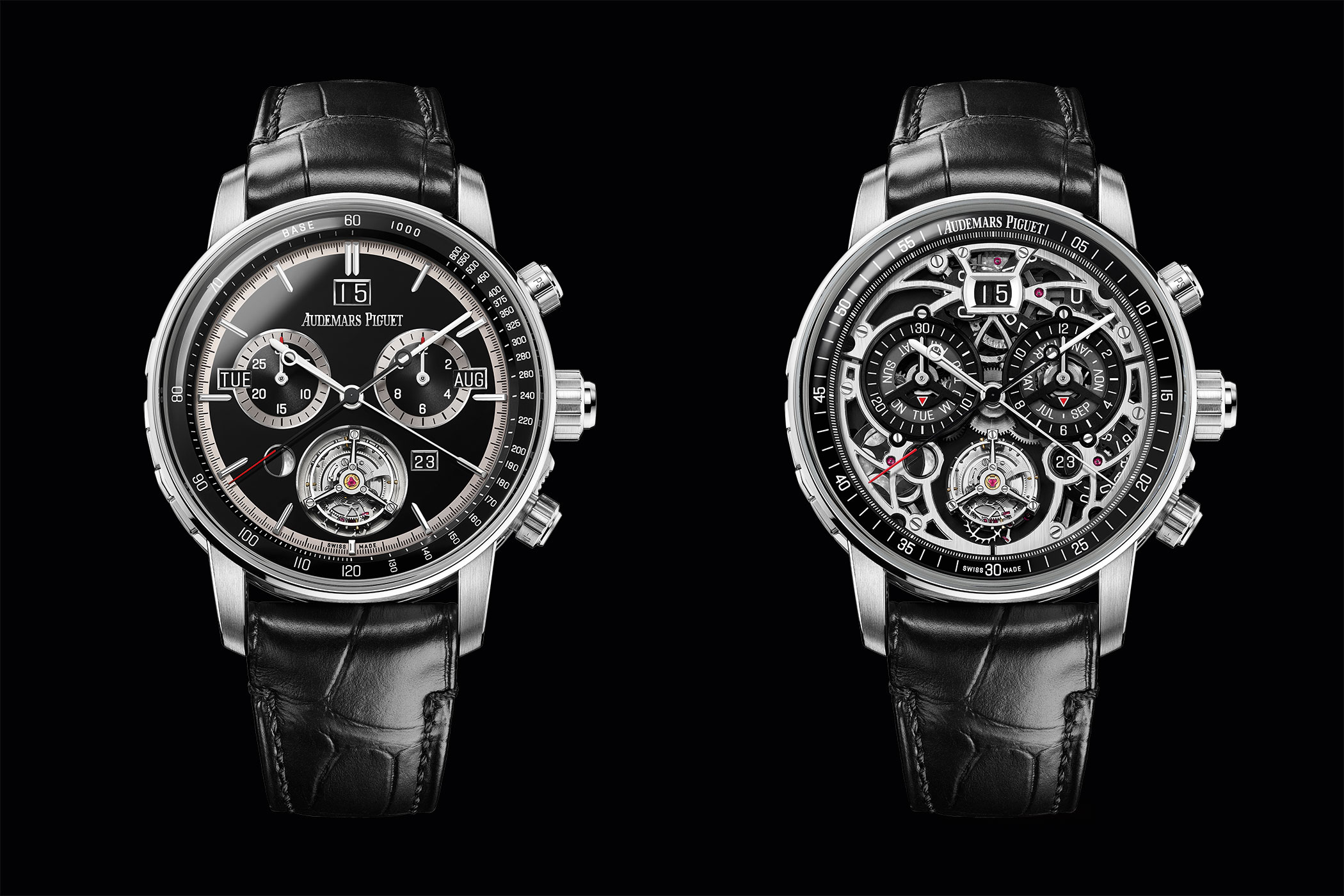
The history behind the RD#4
The Code 11.59 by Audemars Piguet Ultra-Complication Universelle RD#4 pays tribute to L’Universelle pocket watch, conceived in the late 19th century. This pocket watch remains undoubtedly one of the most complicated watches ever to come out of the manufacture. Created alongside watchmaking workshop Dürrstein – which in turn created Union Glashütte, the name stamped on the pocket watch’s dial – it was first advertised in 1901 under the name ‘Universal-Uhr‘ (German for ‘universal watch’).
Host to no less than 26 functions, including 19 classic complications, the historic pocket watch still counts amongst the world’s most complicated timepieces to have been made, alongside the likes of Breguet’s Marie Antoinette (1802) and Vacheron Constantin’s Le Cabinotier (2019). To name just a few of its innovations, the original L’Universelle pocket watch features a Grande Sonnerie Carillon, perpetual calendar, and a split- seconds, jumping-second and deadbeat-second chronograph. That chronograph mechanism remains one of the most integrated to this day, with four out of five chronograph hands controlled by one single push-piece. The calibre of the incredible L’Universelle consists of no less than 1,168 components, including 316 screws.

After many decades under the radar, the pocket watch resurfaced in 1993, when it was purchased through Sotheby’s by a prominent British collector of Audemars Piguet antique timepieces. It underwent some major changes in 2001, when its movement was cased in platinum and the dial personalised by its owner. The pocket watch finally made its way back to Audemars Piguet in 2012, when it was restored by its atelier and put into its original pink-gold case once again. This alone took four years and expert watchmaker restorers. Upon completion, the manufacture purchased the historic ultra-complicated piece, and it has remained at the Musée Atelier Audemars Piguet permanent exhibition ever since.
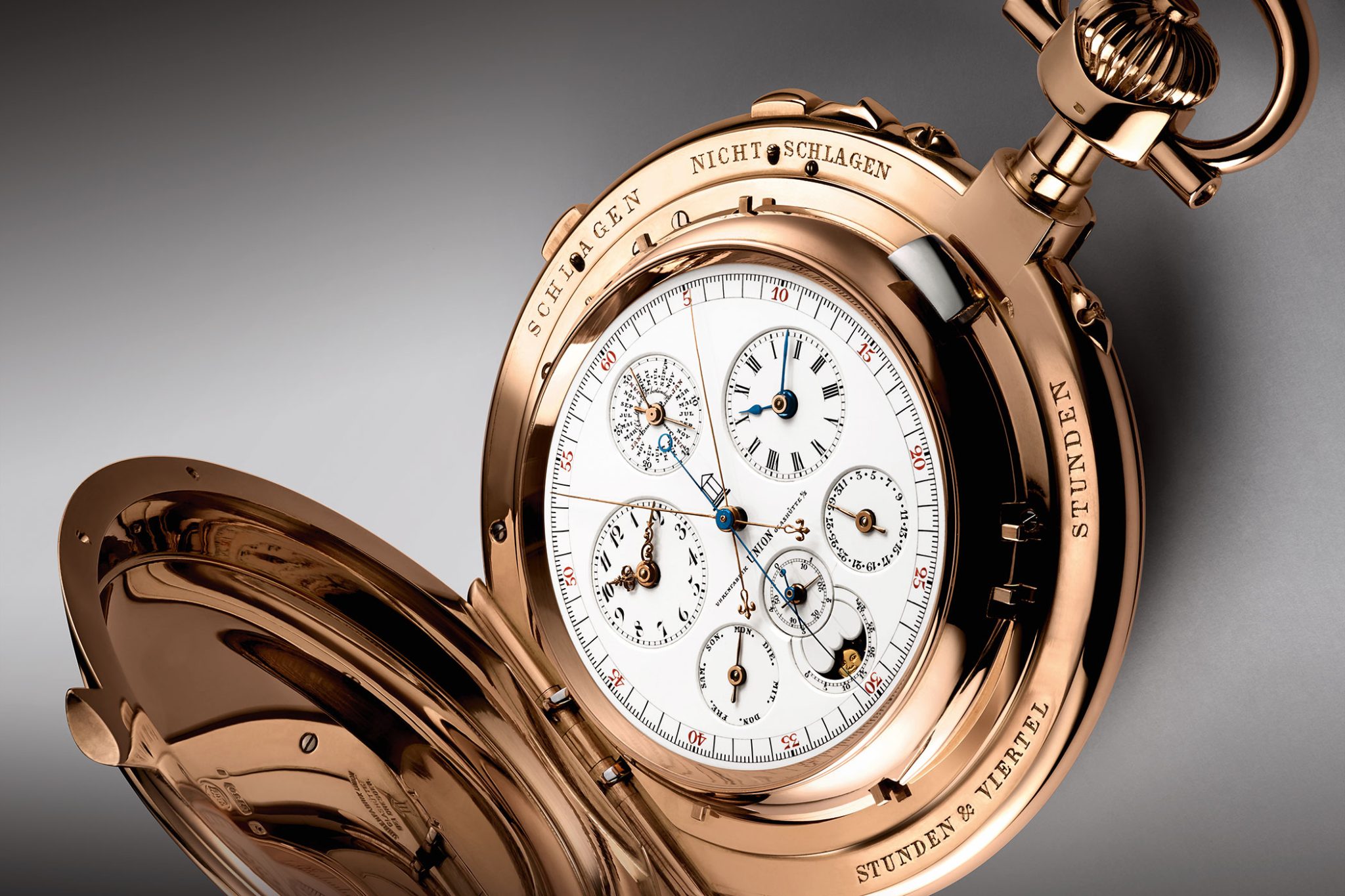
One watch, four editions
This year, Audemars Piguet is introducing four different versions of the new RD#4, which takes inspiration from the pocket watch; one in pink-gold, three in white-gold. All four versions have differing dials and overall aesthetics.
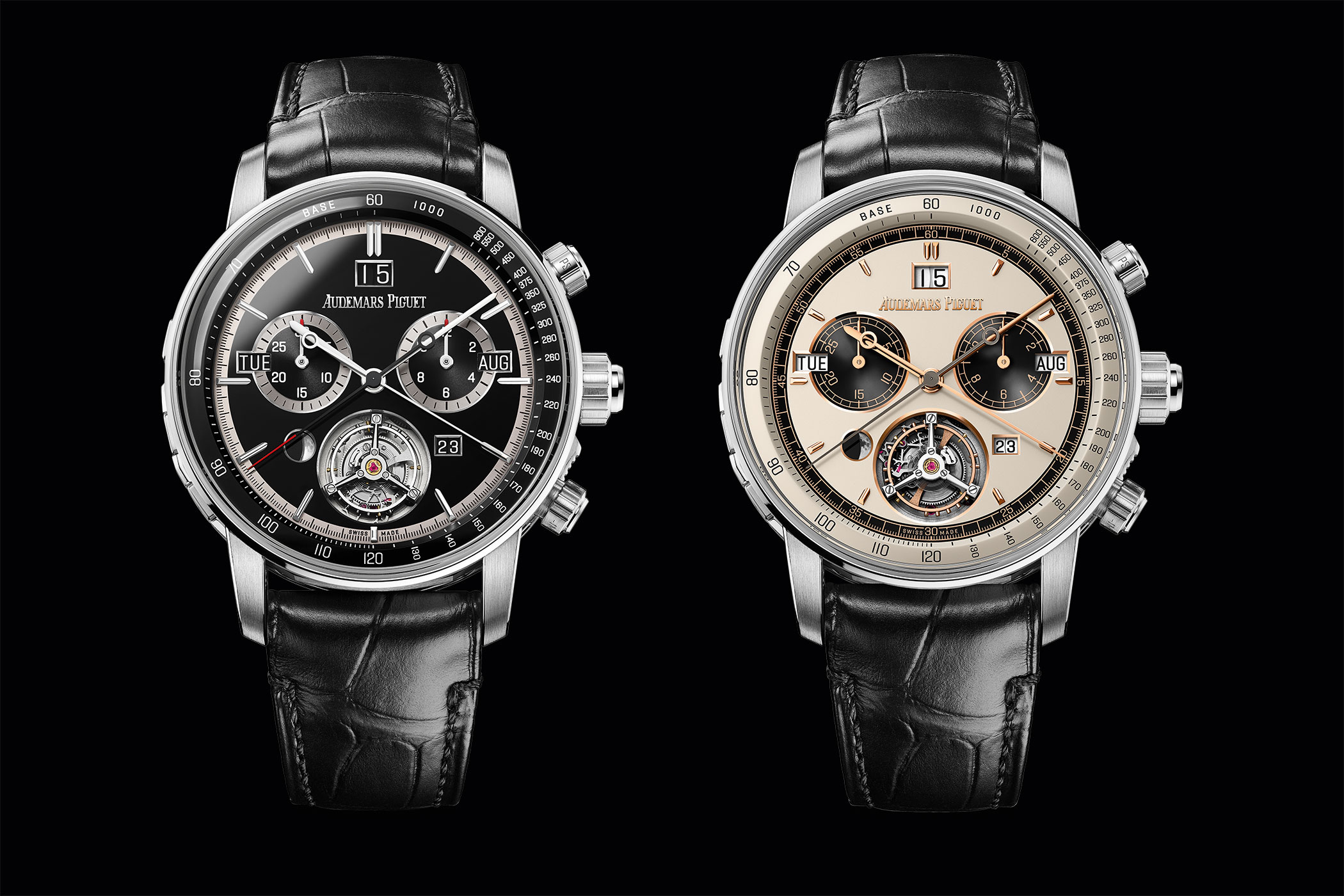
The two versions revealing only the flying tourbillon aim to maximise legibility of the chronograph and calendar functions by providing calendar indications in separate windows evenly spread across the dial. The day and month windows sit above the hour-markers at 9 and 3 o’clock respectively. Hand finishing plays a central role on the dials; even the delicate gold threads encircling all counters and windows are done by hand with a very thin polished chamfer.
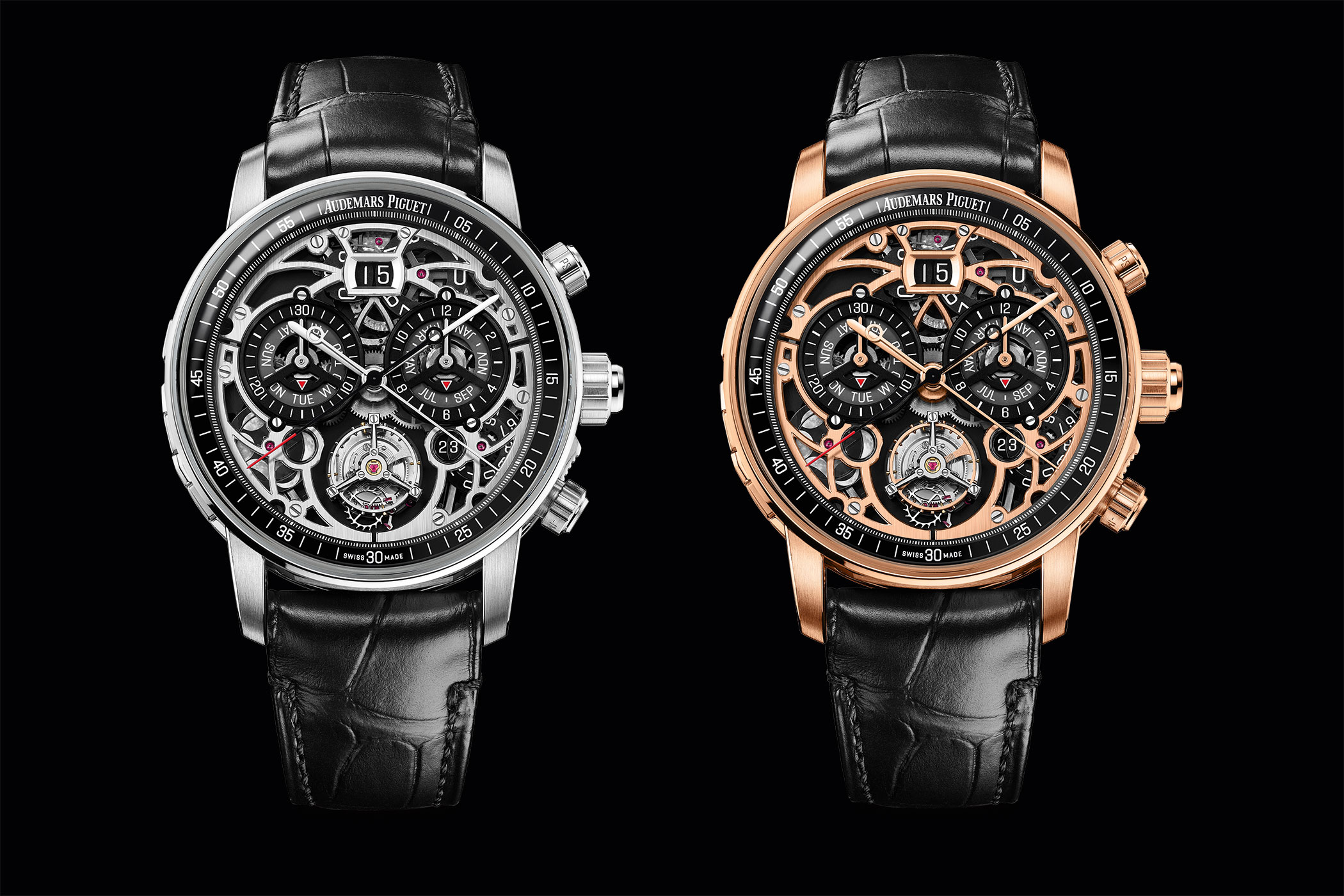
Ref. 26398BC.OO.D002CR.01
The first reference combines a white-gold case with an opaline black galvanic gold dial, inner bezel and chronograph counters illuminated by bright accents. The flying tourbillon cage lies at 6 o’clock, and echoes the chronograph subdial counters’ light grey external zones as well as the zone around the dial. White gold applied hour-markers and hands indicate the time, while the Audemars Piguet signature created through a galvanic growth process glows in gold at 12 o’clock.
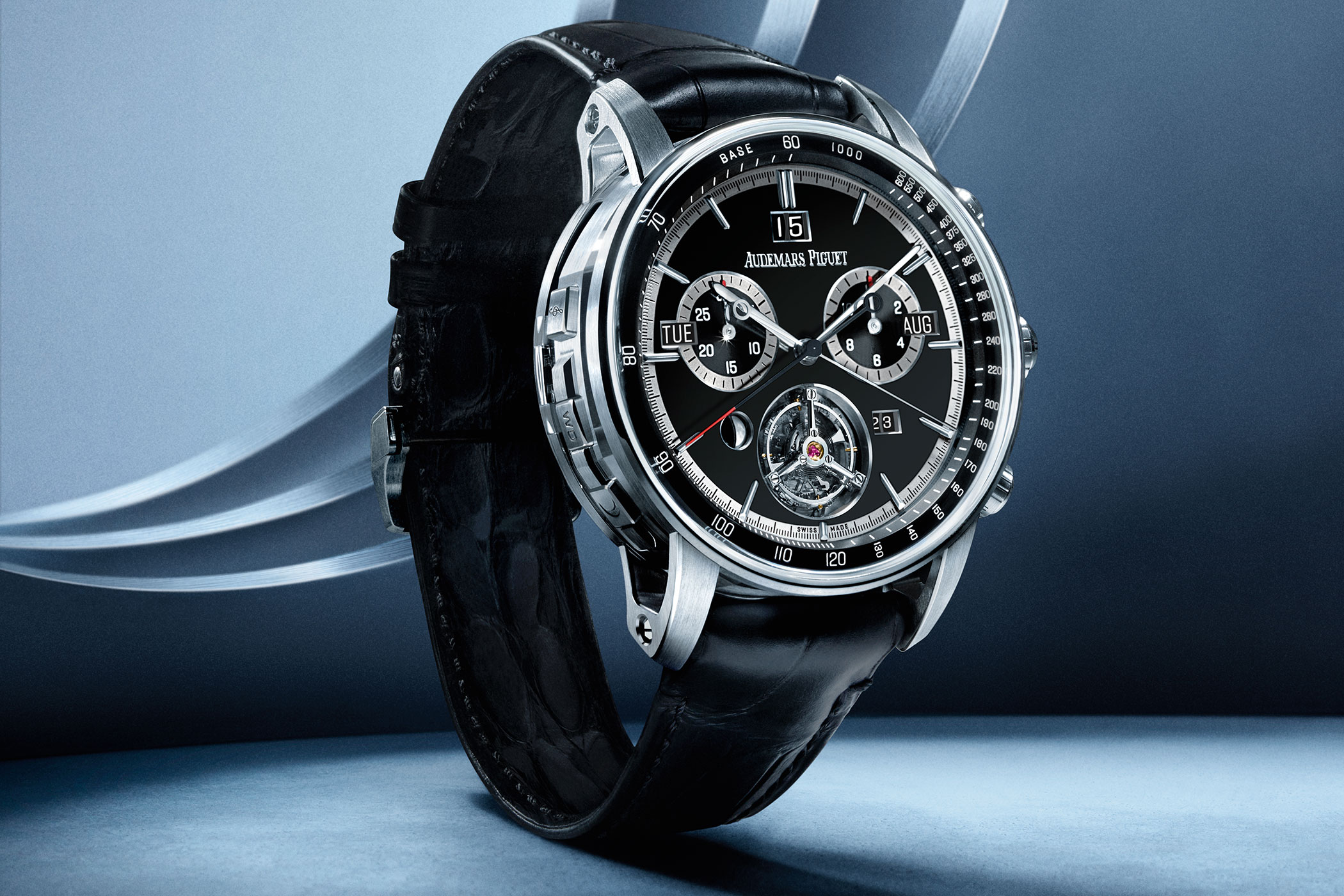
Ref. 26398BC.OO.D002CR.04
Meanwhile, the second reference is housed in a 18-carat white gold case, which the watchmaker combines with an opaline beige PVD gold dial. This time, Audemars Piguet opts for black chronograph subdial counters and a black external zone, upon which perches a pink transferred minute track. In addition, the timepiece has 18-carat pink gold hour-markers and hands, matching to the pink-gold-toned balance wheel visible through the flying tourbillon cage.
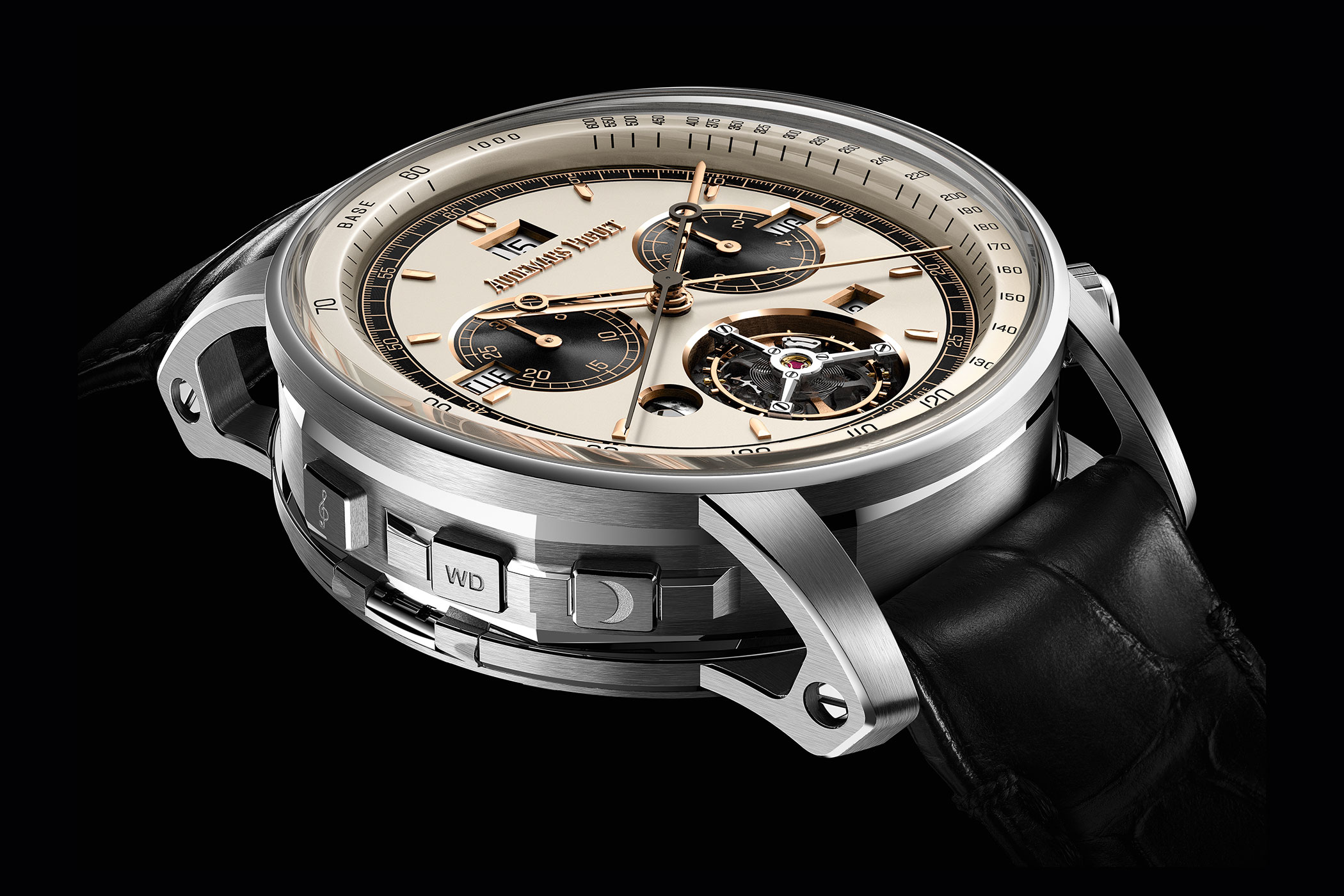
Ref. 26398OR.OO.D002CR.01
Ref. 26398BC.OO.D002CR.02
Meanwhile, the other two models provide a phenomenal view of the complex and highly finished movement within. Housed in a white or pink-gold case alongside two-tone dials, the timepieces stand out with their gold open-worked bridges and black accents. On these two models, the day and month are now indicated on a grey zone at the centre of the partially open-worked black chronograph counters.
The calibre 1000: Facts and figures
This movement earns its name, incorporating over 1,100 components – while keeping a diameter of 34.3 mm and height of 8.75 mm. With these many tiny components, the watchmaker manages to incorporate 40 functions – including 23 complications – such as a Grande Sonnerie Supersonnerie, a minute repeater, a perpetual calendar, a split-seconds flyback chronograph as well as a flying tourbillon.
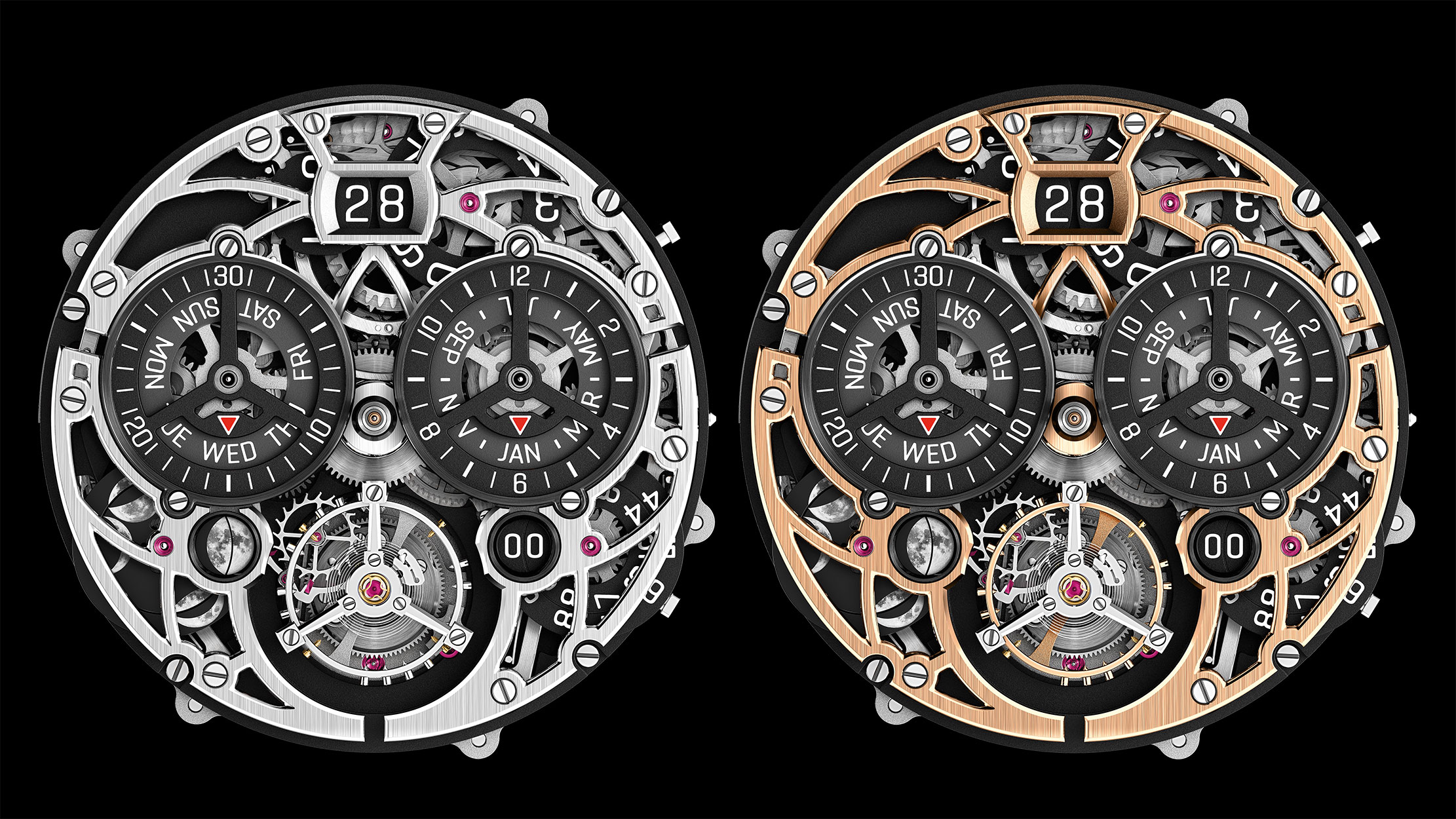
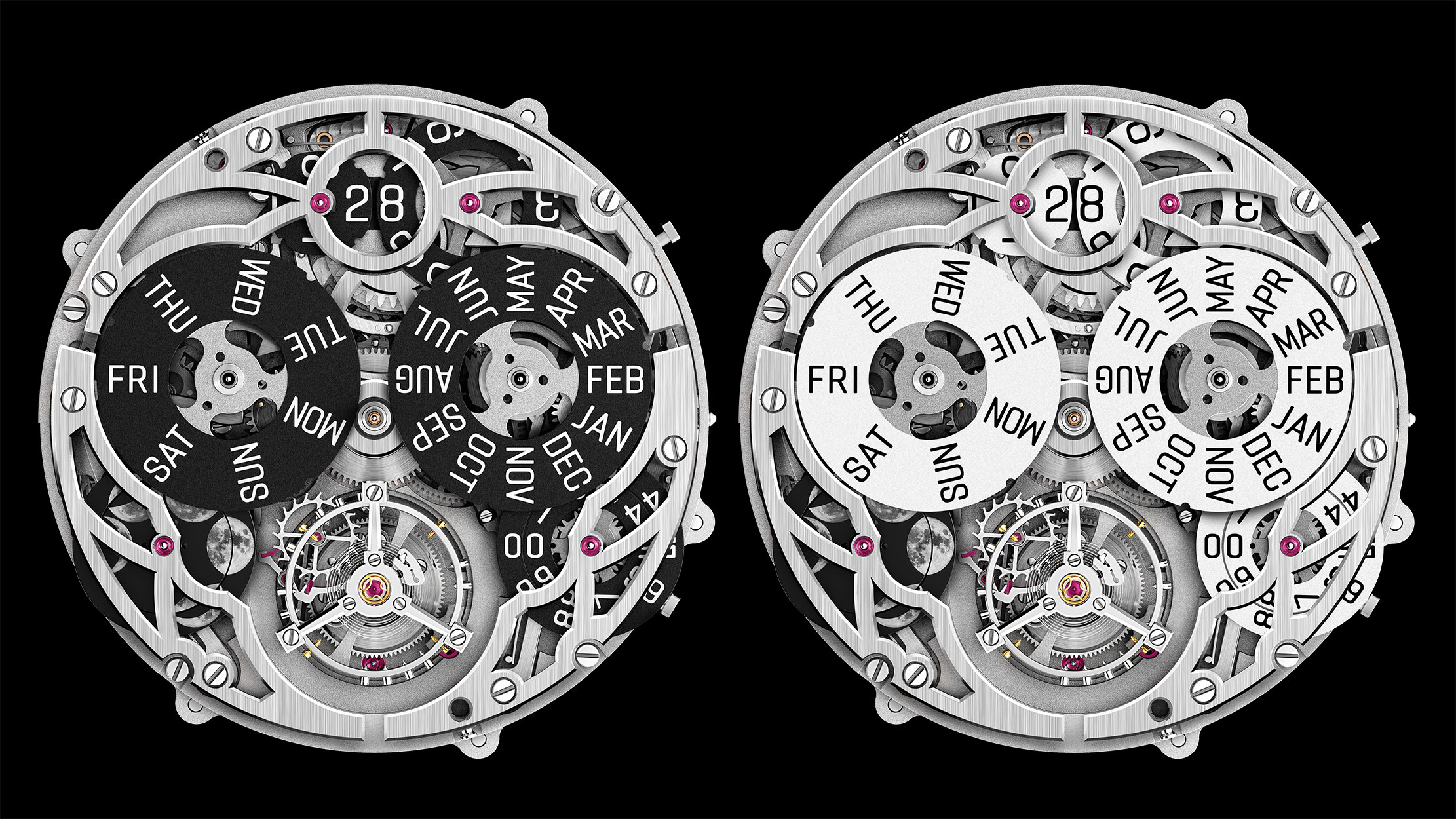
Seven years in the making, Audemars Piguet gathered an army of numerous engineers, designers, watchmakers and craftspeople to bring the RD#4‘s calibre to life. The calibre 1000 has a power reserve of 64 hours and beats at a frequency of 3 Hz.
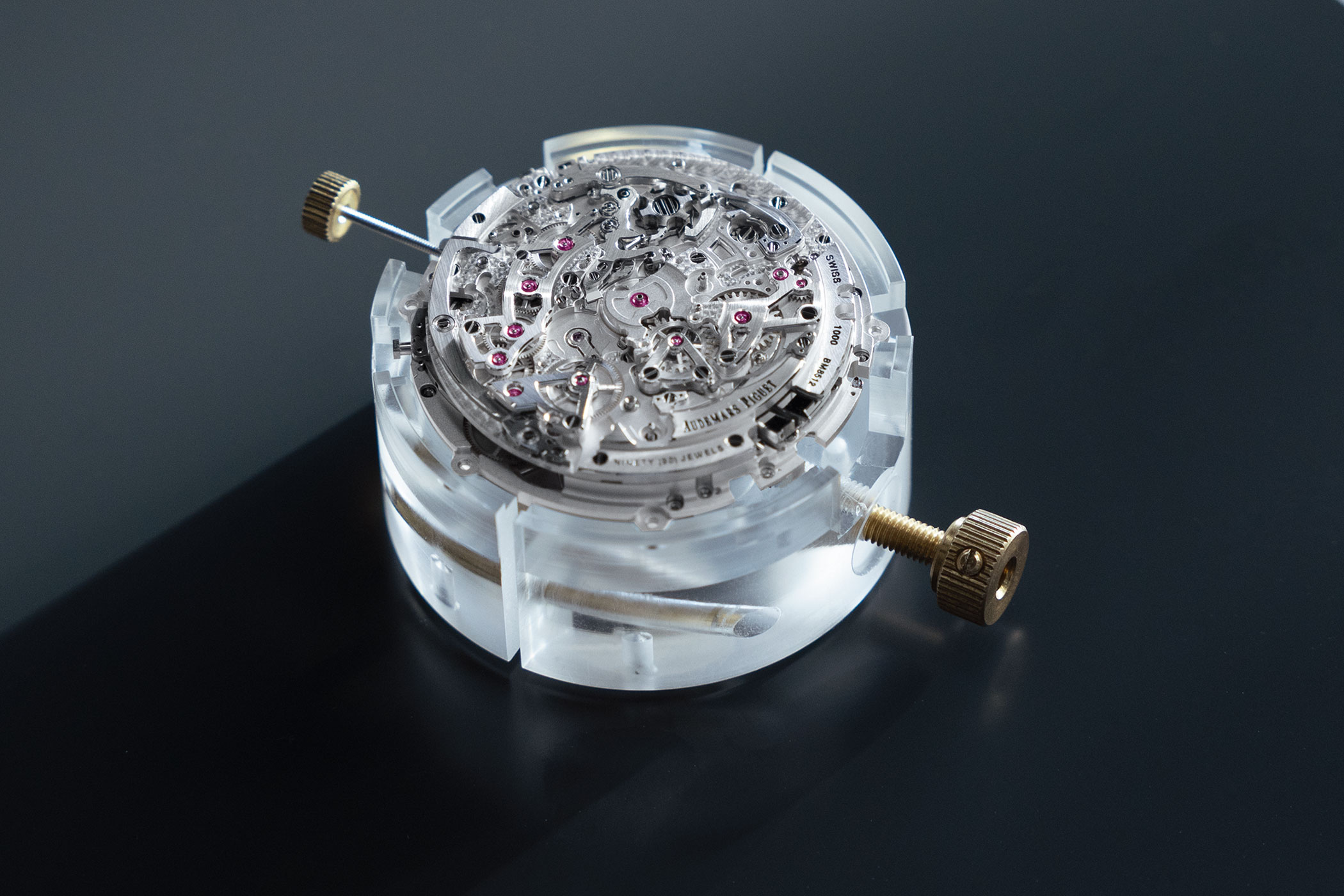
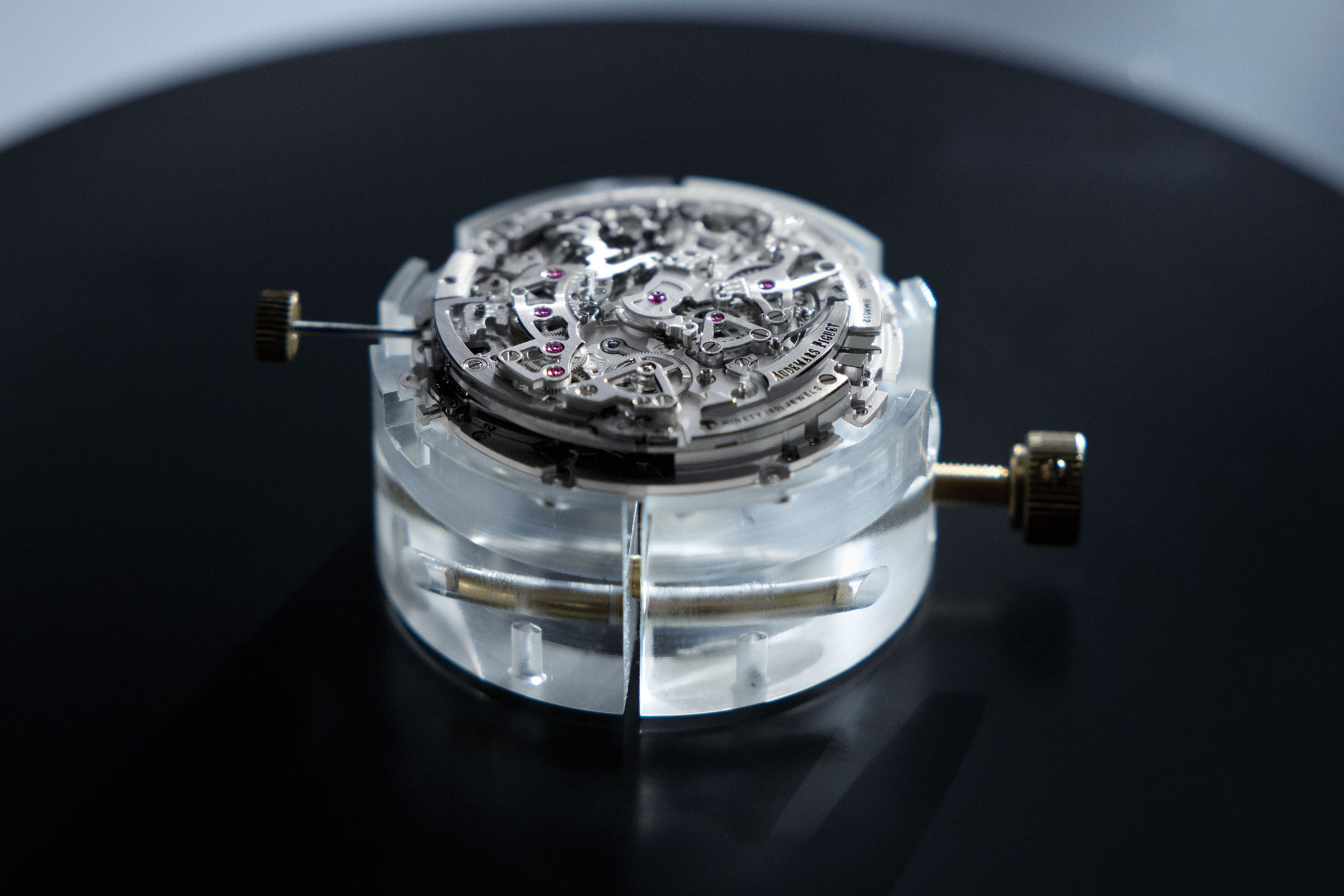
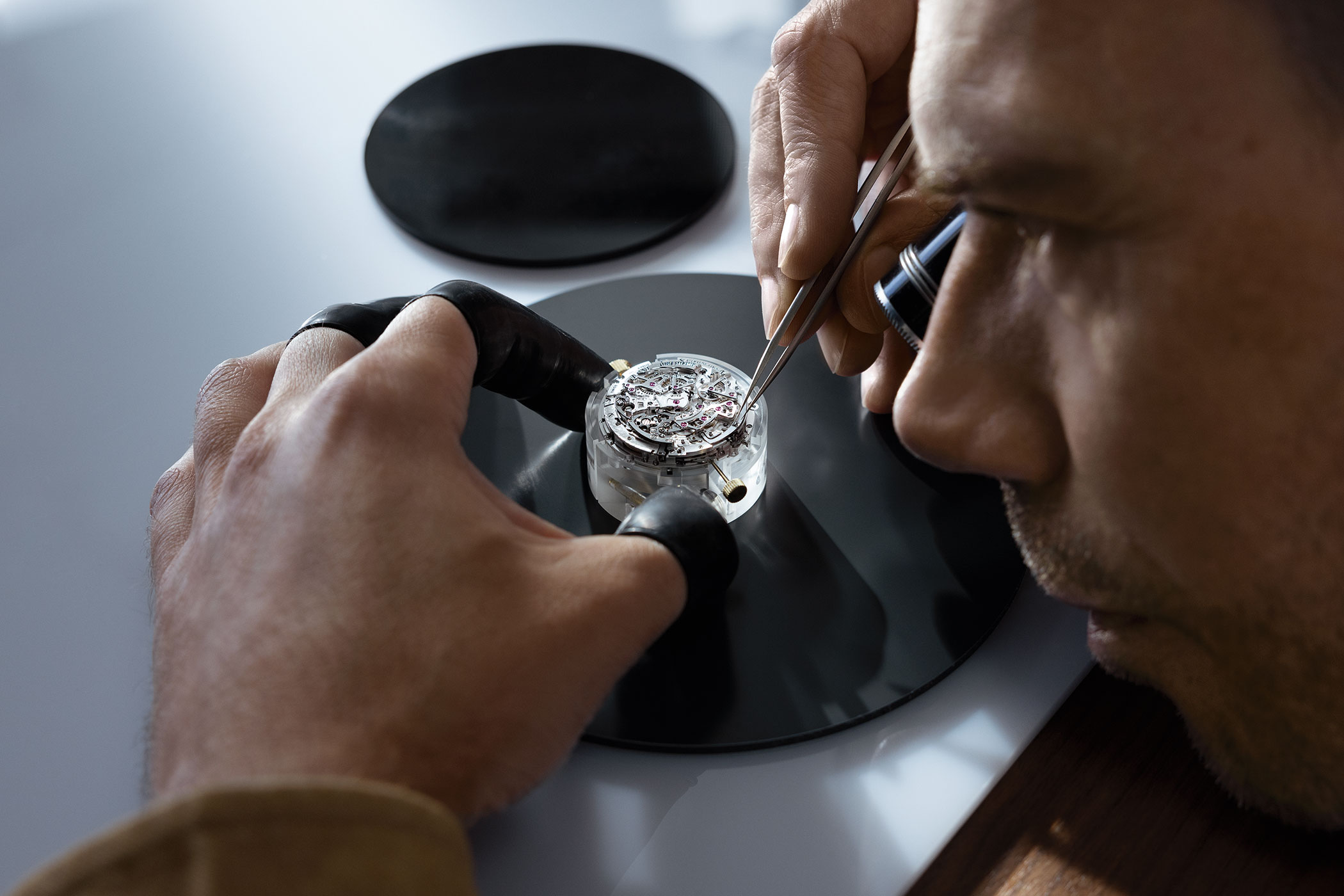
Chiming in: The Supersonnerie
The Code 11.59 by Audemars Piguet Ultra-Complication Universelle RD#4 combines a Grande Sonnerie with the horology house’s patented Supersonnerie technology introduced in 2015. But how do these complications work?
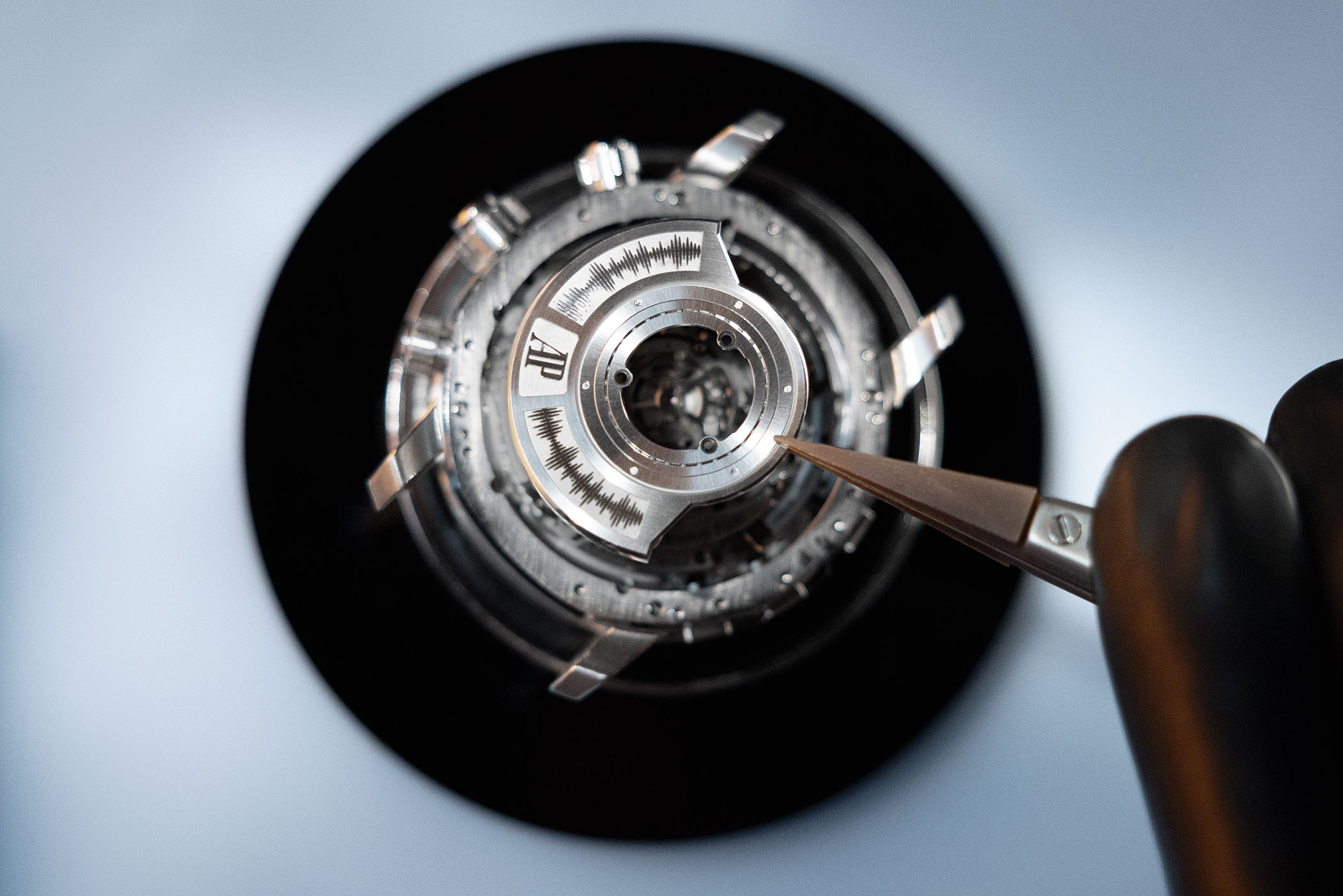
Firstly, a Grande Sonnerie strikes the hours and every quarter hour (repeating the hour before the quarter every time), without any involvement from the wearer. When switched to the Petite Sonnerie, the watch chimes the hours only, while the automatic chiming is deactivated in the silent mode. The wearer can also activate the minute repeater mechanism at any time using its push-piece. These chiming functions have their very own self-winding barrel, in order to optimise energy and ensure high performance from the watch.
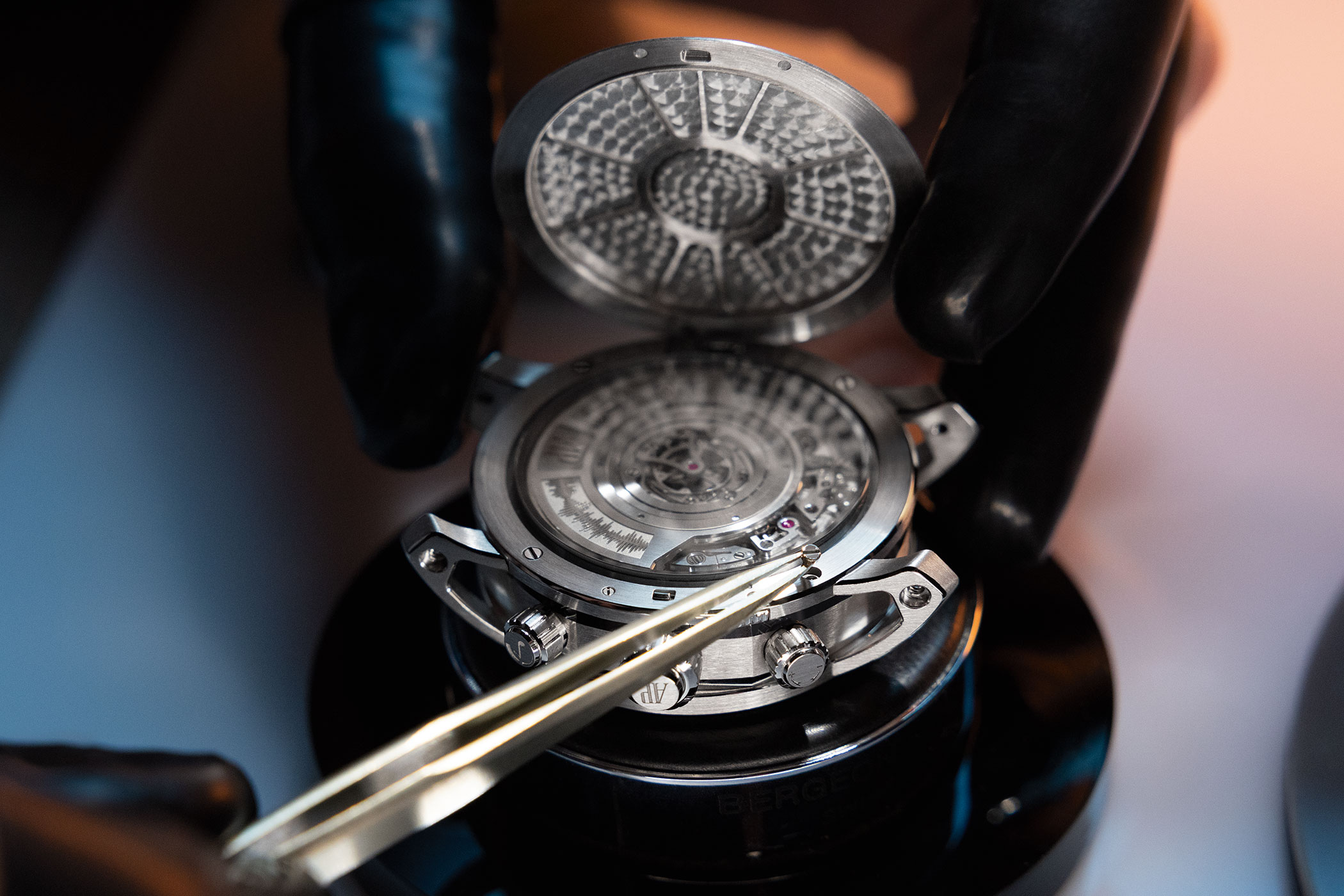
Meanwhile, the patented Supersonnerie mechanism gives the RD#4 its high sound quality and harmonic tone, evoking the sound of older chiming timepieces. Eight years in the making, the special construction means that its gongs are not attached to the mainplate, but rather to a dedicated sapphire component acting as a soundboard that improves sound transmission. This also provides a sharper tempo, as the hours and minutes chime without interruption when there is no quarter chiming sequence.
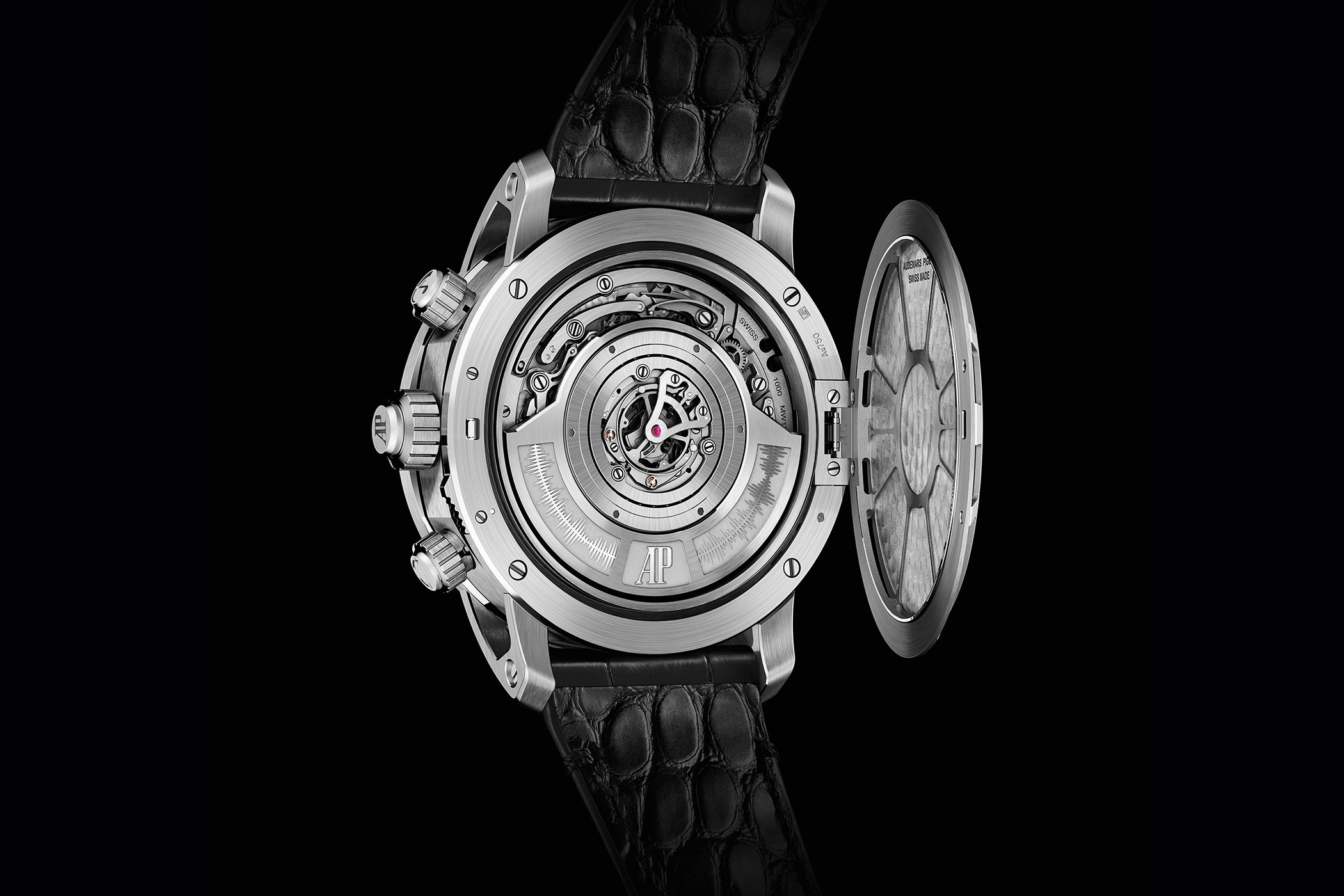
In most models, this Supersonnerie construction is concealed by a solid caseback. However, the watchmakers at Audemars Piguet revised the Supersonnerie construction for the RD#4, using a special double caseback system with a secret cover, which allows the wearer to view the movement in all its glory. Furthermore, the secret cover integrates several apertures on the side to let air through and boost sound amplification.
The perpetual calendar
The semi-Gregorian perpetual calendar mechanism was conceived to optimise the display and use of the calendar functions, while taking up as little space as possible. Once again, the correction system of the calendar functions aims to keep things simple for the user. While the wearer can correct the day and moon phases using two dedicated pushers, the reversible date system allows one to move the date forwards and backwards by turning the crown at 3 o’clock. Meanwhile, the wearer can adjust the month via the super-crown at 4 o’clock.

In addition to displaying the day, large date and month at 9, 12 and 3 o’clock respectively, the RD#4 indicates the year using a two-digit window. Naturally, the perpetual calendar is synchronised so that the year changes automatically every time the month wheel moves from December to January. The calendar mechanism thus calculates the number of days per month, including leap years, as well as featuring the 100-year correction normally required in traditional Gregorian perpetual calendars. Incredibly, no manual adjustment is therefore necessary until the year 2400.
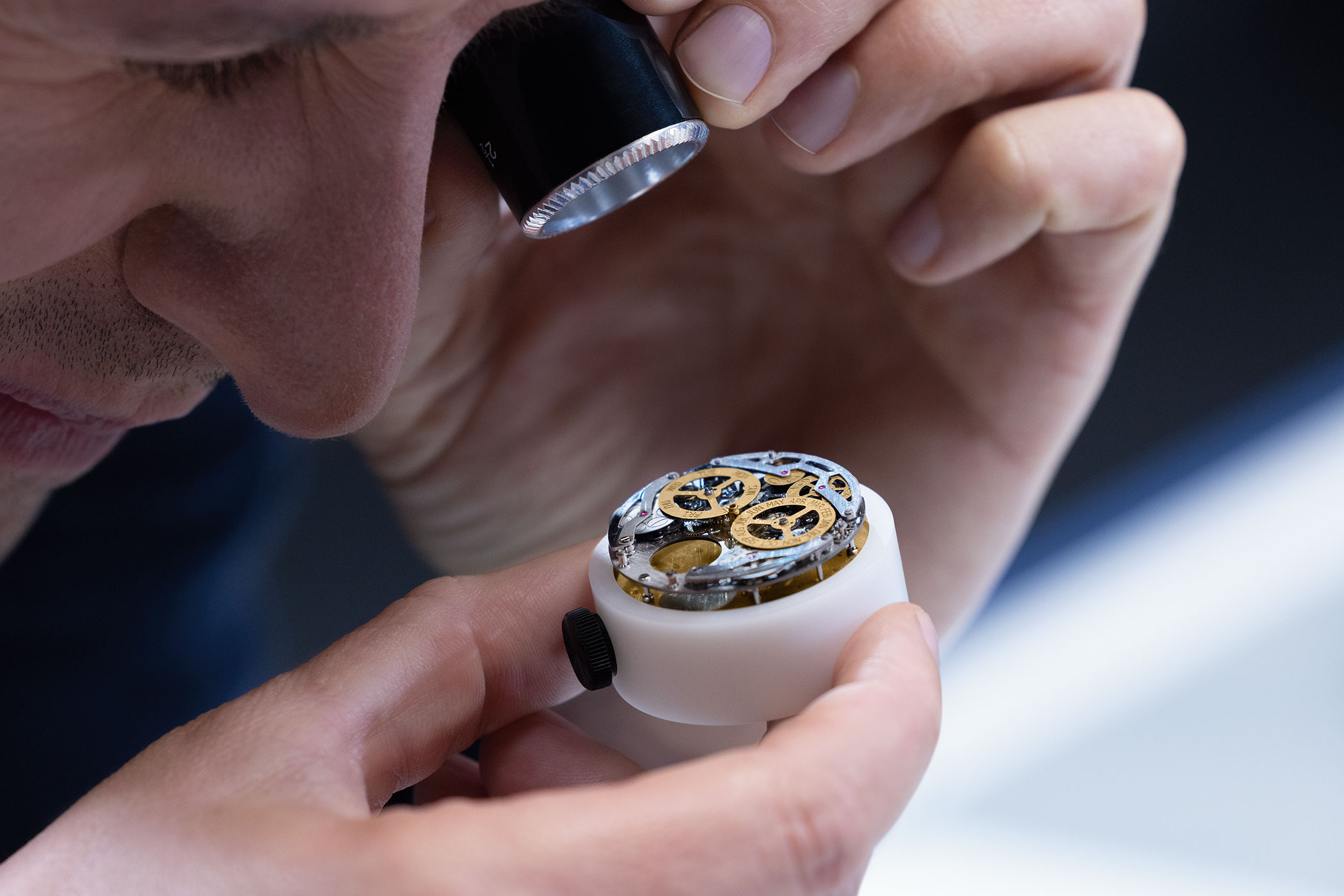
Lastly, the Code 11.59 by Audemars Piguet Ultra-Complication Universelle RD#4 incorporates an innovative instant-jump astronomical moon system that conveys a more realistic depiction of the moon. Two concentric discs, on which six different moon positions are printed, combine to form ten images faithfully representing the transitory waxing and waning stages between the New and Full Moon, as the satellite orbits around the Earth in an average of 29.53 days.
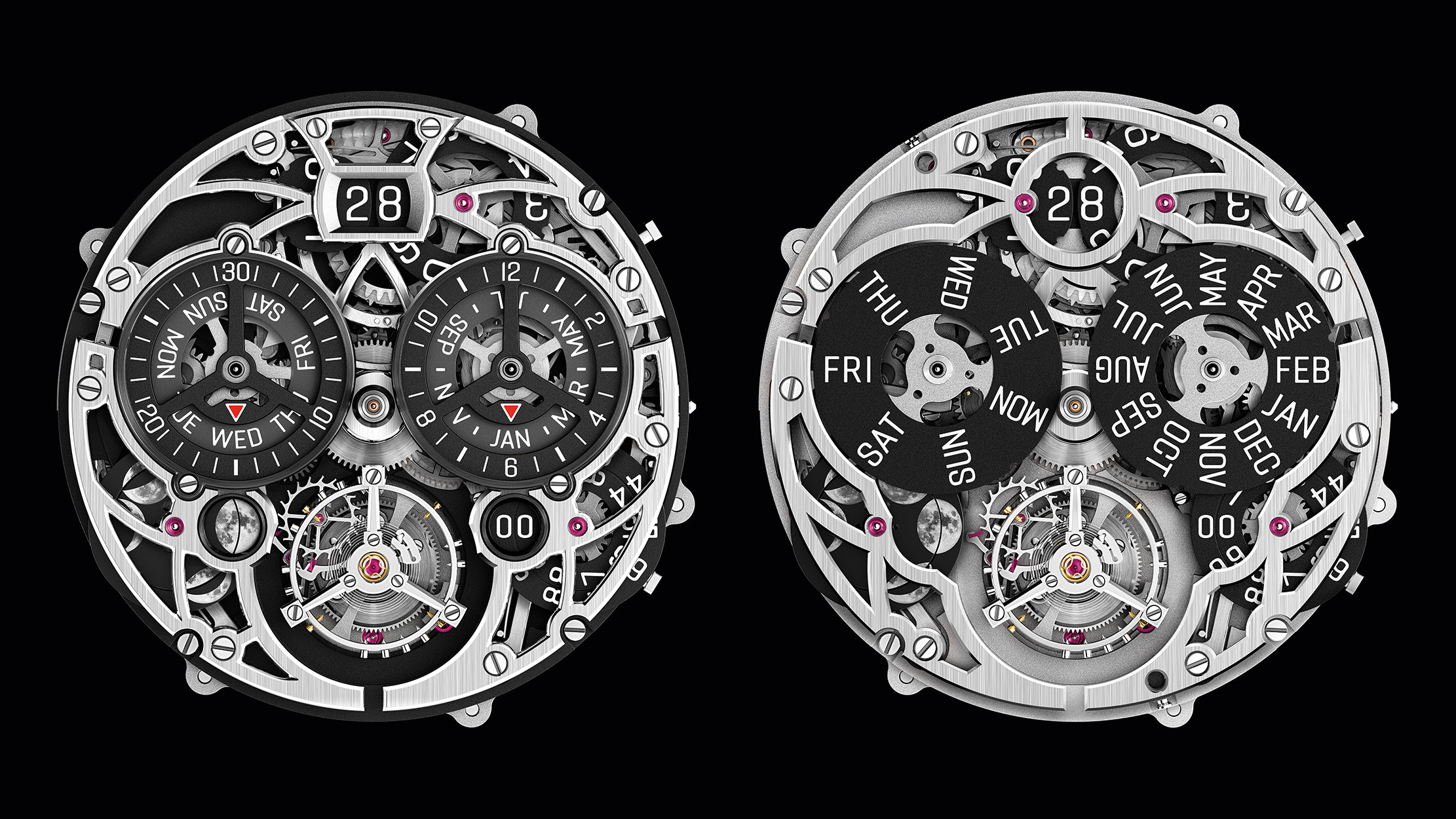
The chronograph
The RD#4‘s contemporary split-seconds flyback chronograph is able to reset and restart without having to stop the complication first. Furthermore, the chronograph integrates a split-seconds hand that can likewise be stopped independently of the central chronograph hand when its pusher is activated. When the push-piece is pressed again, it catches up to the running hand to continue their journey together around the dial together.
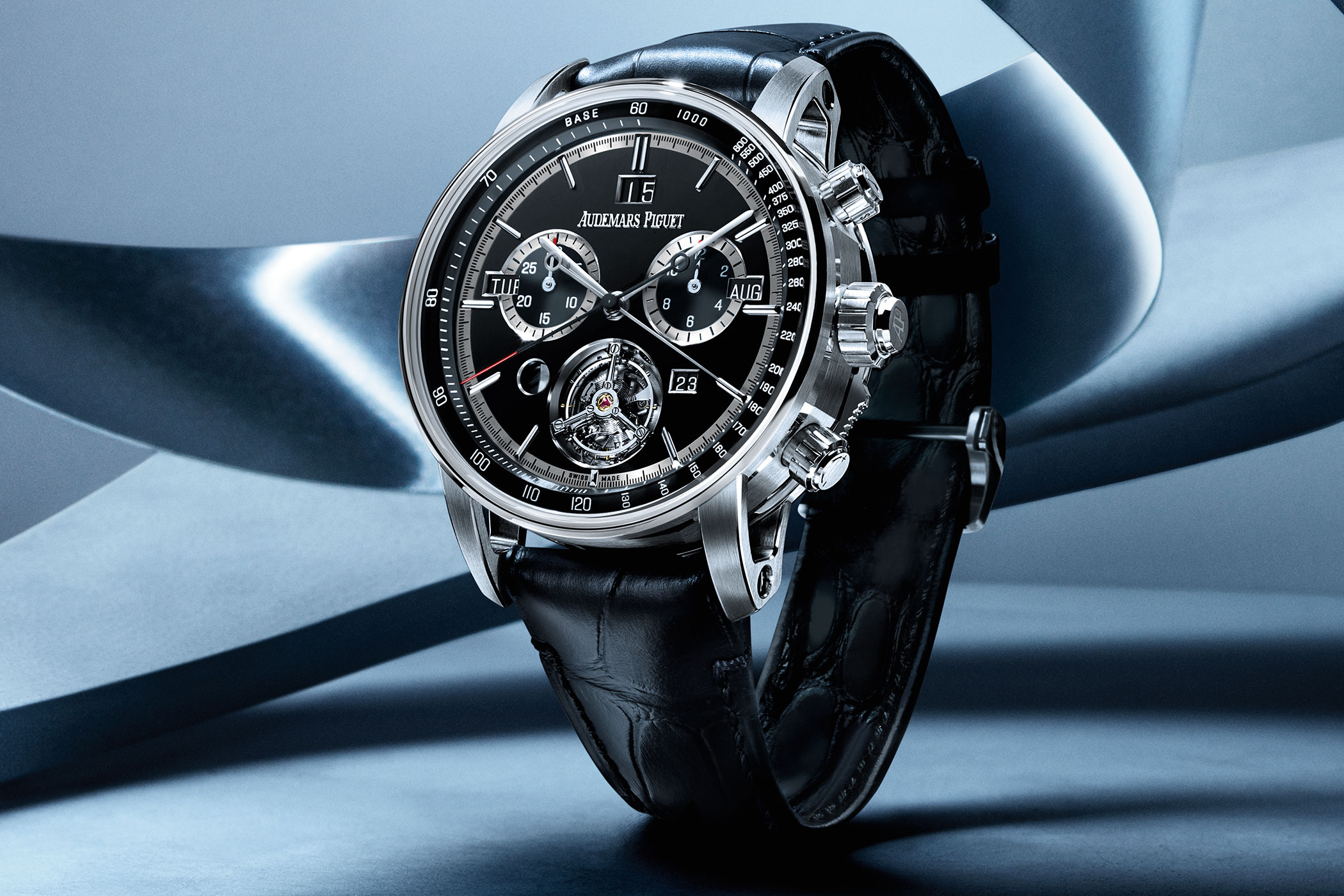
The Code 11.59 by Audemars Piguet Ultra-Complication Universelle RD#4 also features a special ‘swivel’ clutch, which prevents the chronograph central hands from stuttering when the mechanism is started. This innovative type of clutch first appeared in 2015, on Audemars Piguet’s ground-breaking Royal Oak Concept Laptimer.
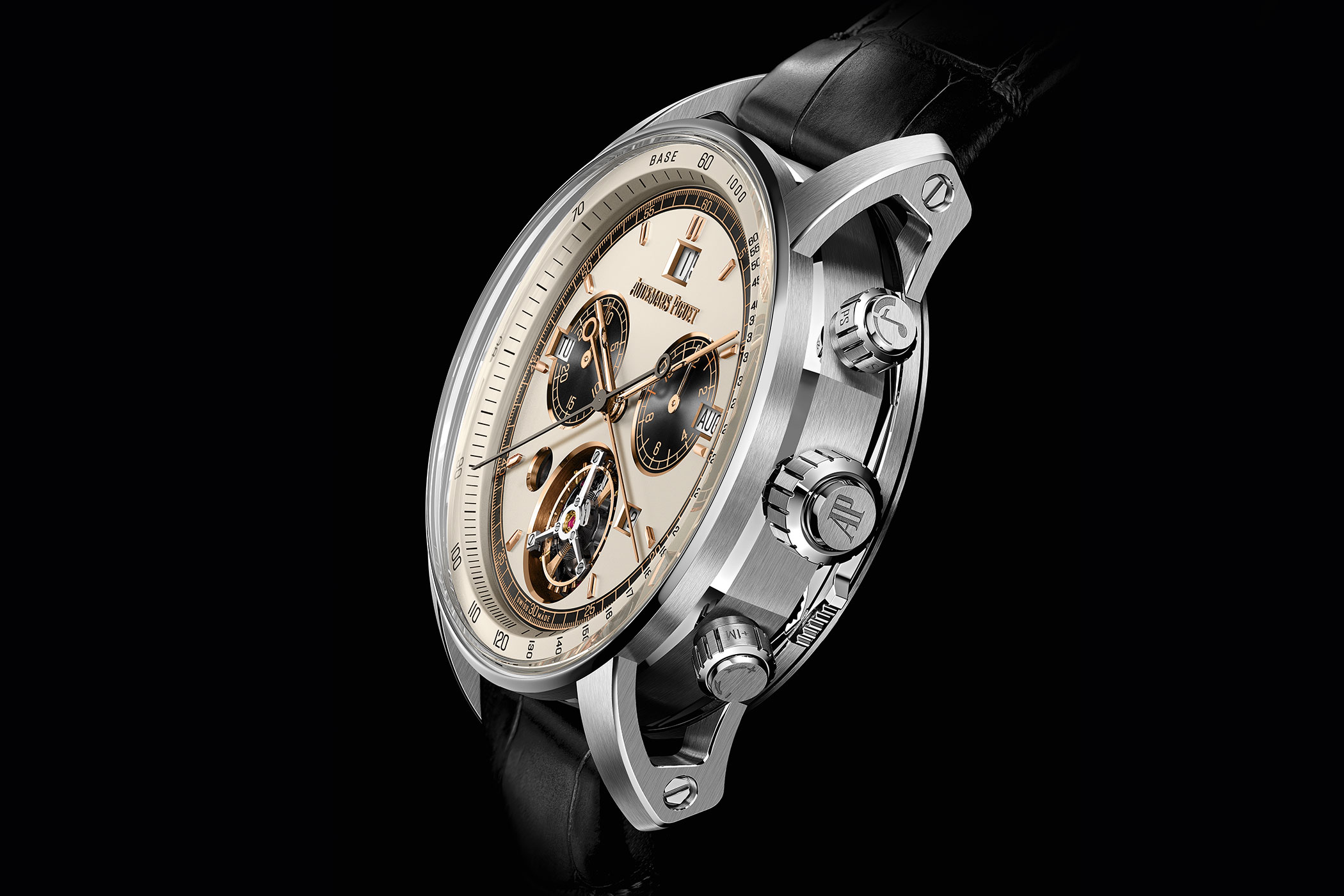
Lastly, to enhance the readability of the chronograph functions, the hour and minute counters have been enlarged and slightly decentralised to sit further away from the flying tourbillon cage at 6 o’clock.
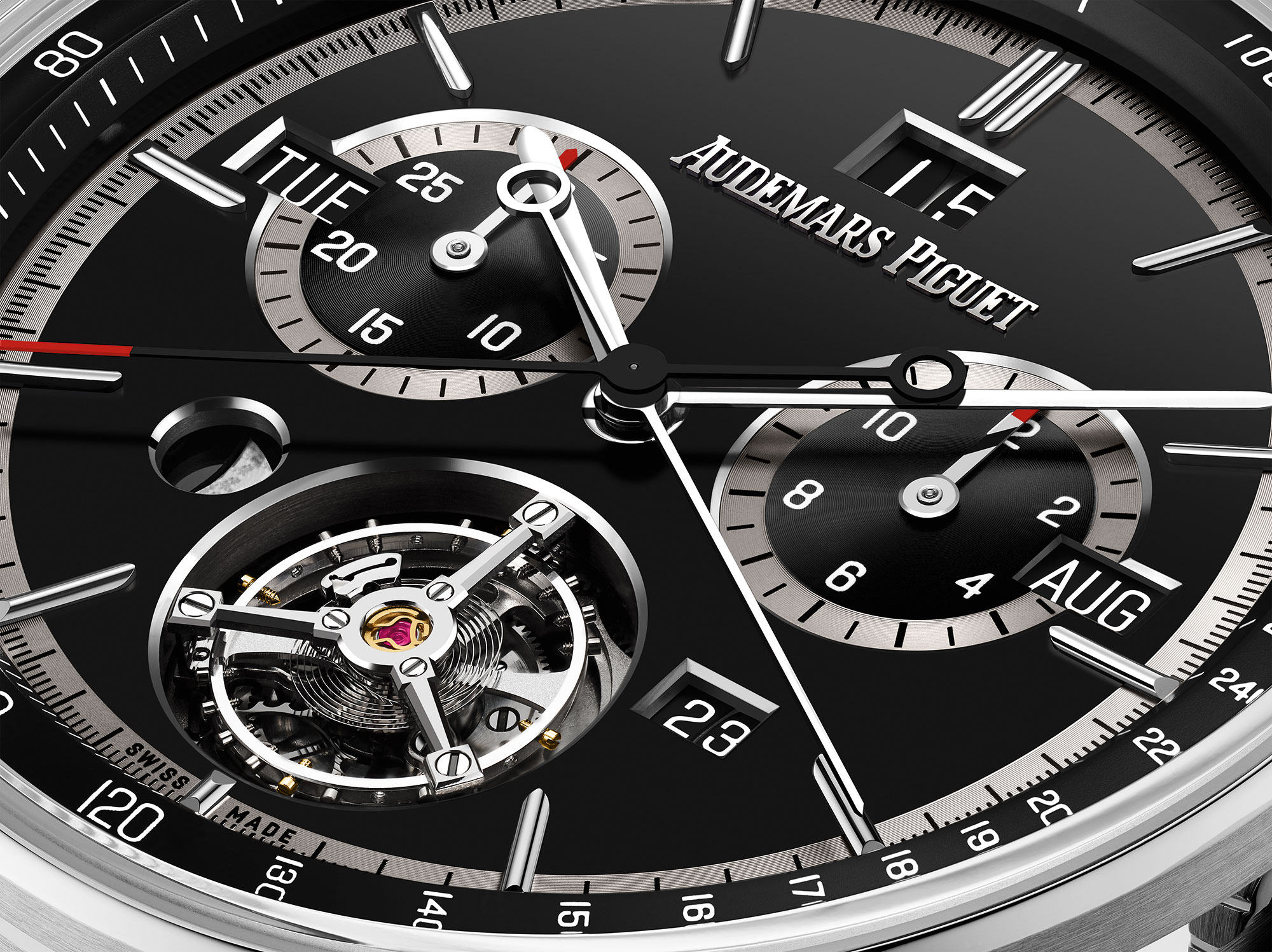
Flying tourbillon
This brings us to the most eye-catching innovation of all: the RD#4‘s flying tourbillon. Completing a revolution every minute to counteract the effect of gravity on the watch’s accuracy, the flying tourbillon also allows for a glimpse of the ultra-complicated timepiece’s calibre 1000, including its large amplitude oscillator.
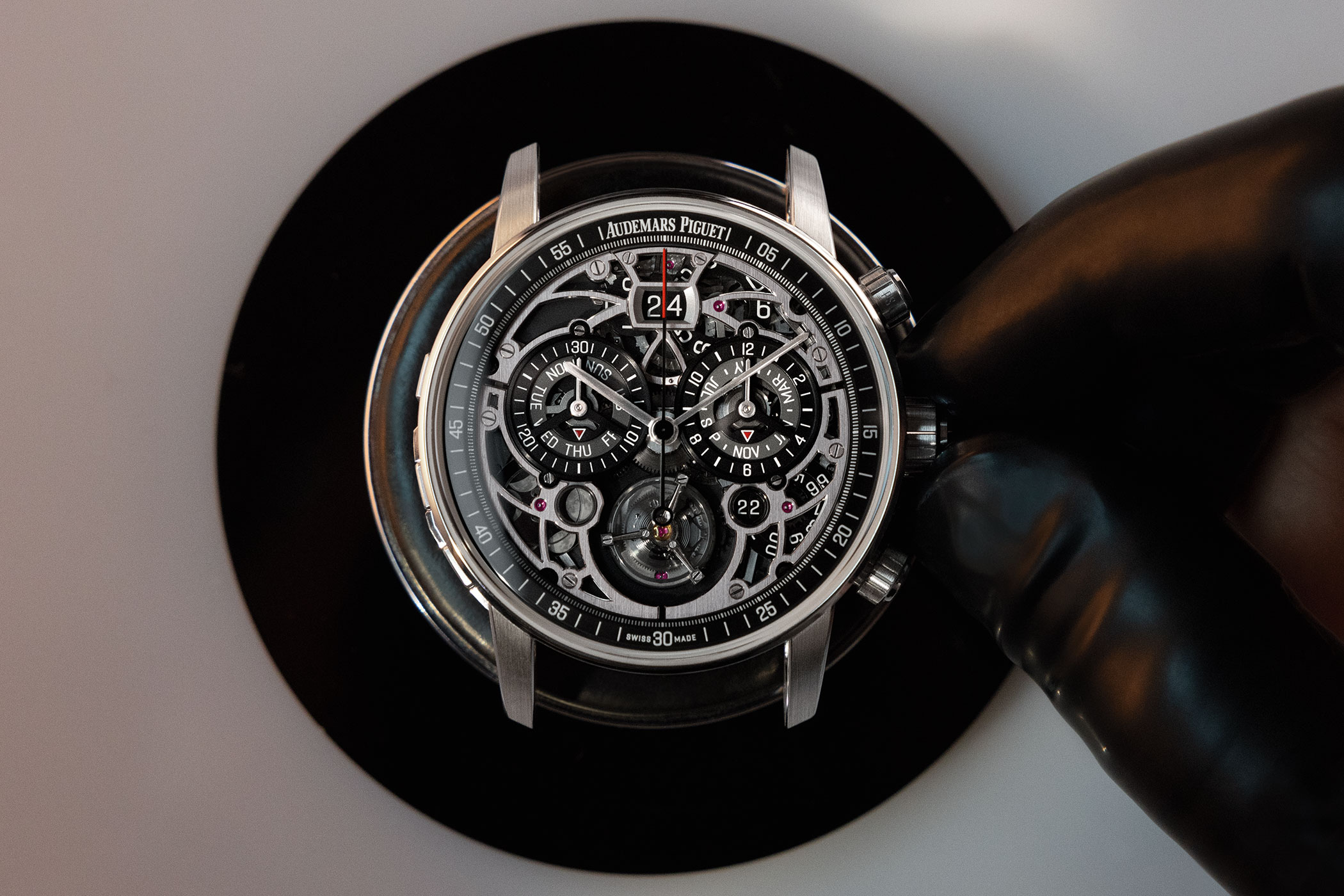
This new oscillator with increased amplitude first appeared last year on the two RD#3 Royal Oak Selfwinding Flying Tourbillon Extra-Thin models. Its role is to prevent the watch from stopping when all functions are working – thus, the geometry of the escapement has been rethought to increase the amplitude of the balance and eliminate knocking – a state which occurs when excessive energy from the escapement is transferred to the oscillator.
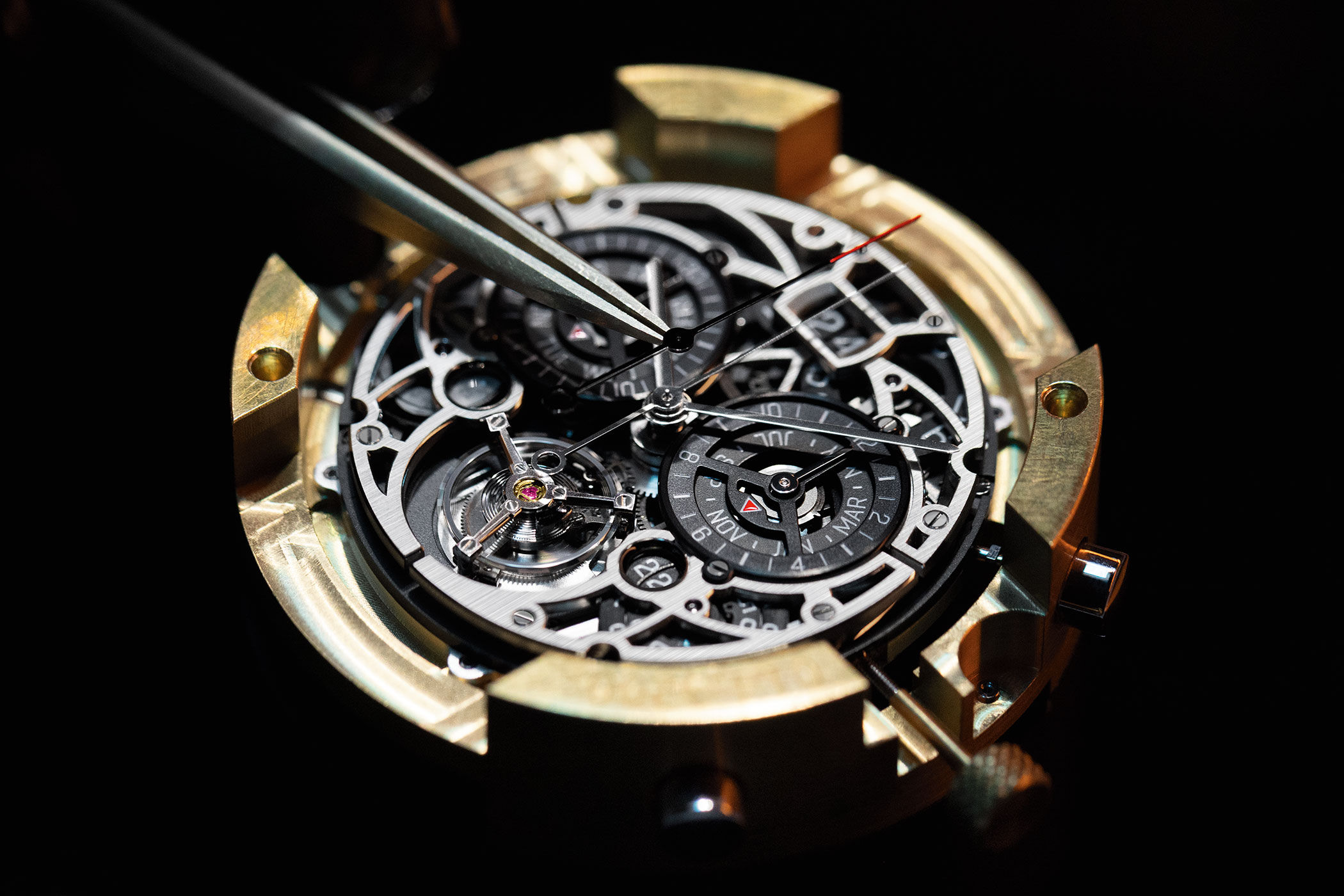
Navigating the RD#4: Crowns and pushers
This ultra-complicated timepiece aims to please its wearer by remaining as user friendly as possible. Thus, Audemars Piguet condense the watch down to having only three crowns and three discreet push-pieces for its 40 functions. The push pieces on the left consist of one at the top for the minute repeater function, alongside two lower pushers that can correct the moon and day indications.
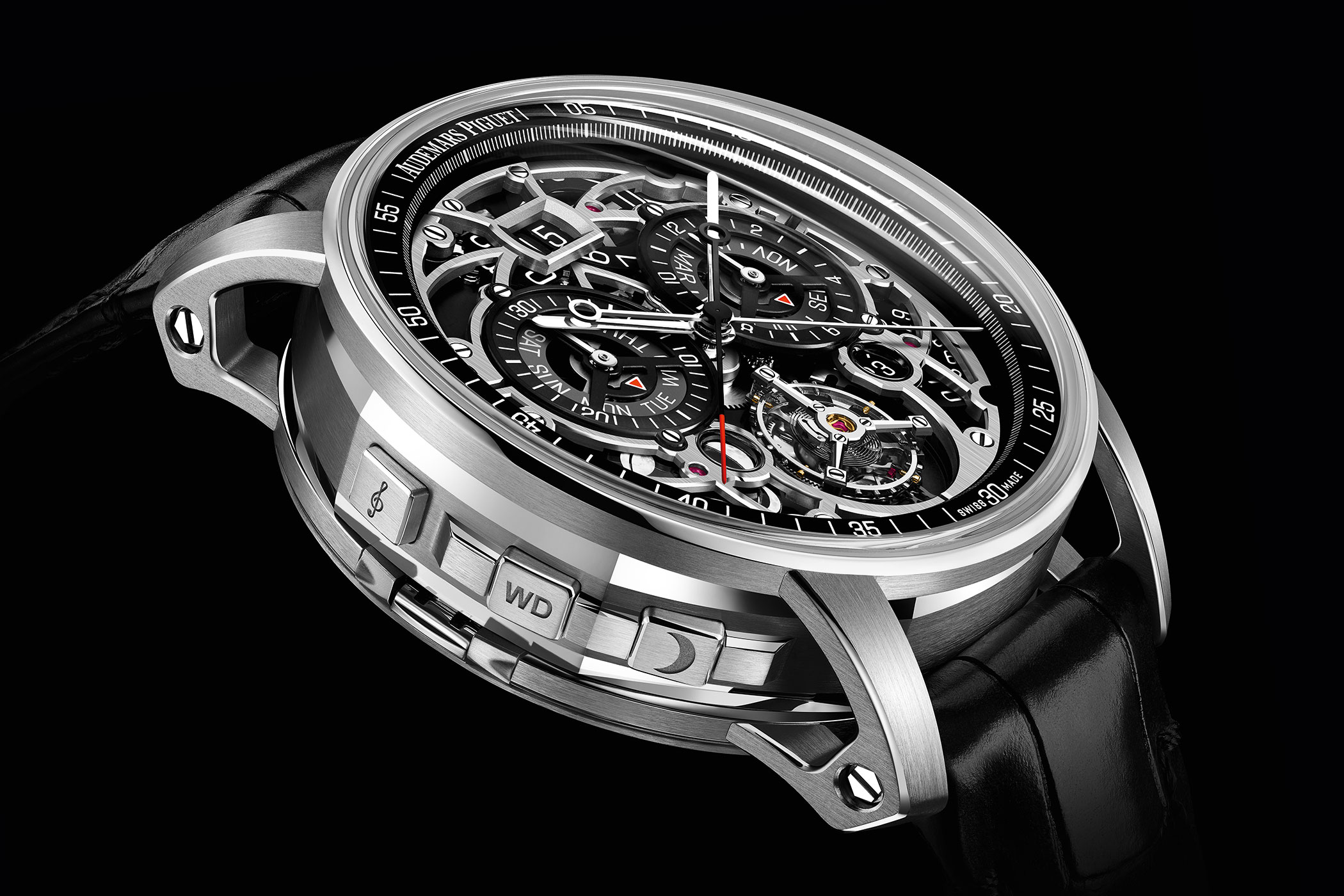
Elsewhere on the right side of the case, three crowns with coaxial pushers allow the wearer to wind the watch, set the time and date with the central crown and select the chiming mode (Grande Sonnerie, Petite Sonnerie or silence mode). The wearer can start or stop the flyback chronograph via the super-crown at 2 o’clock, and reset with the other super-crown at 4 o’clock.
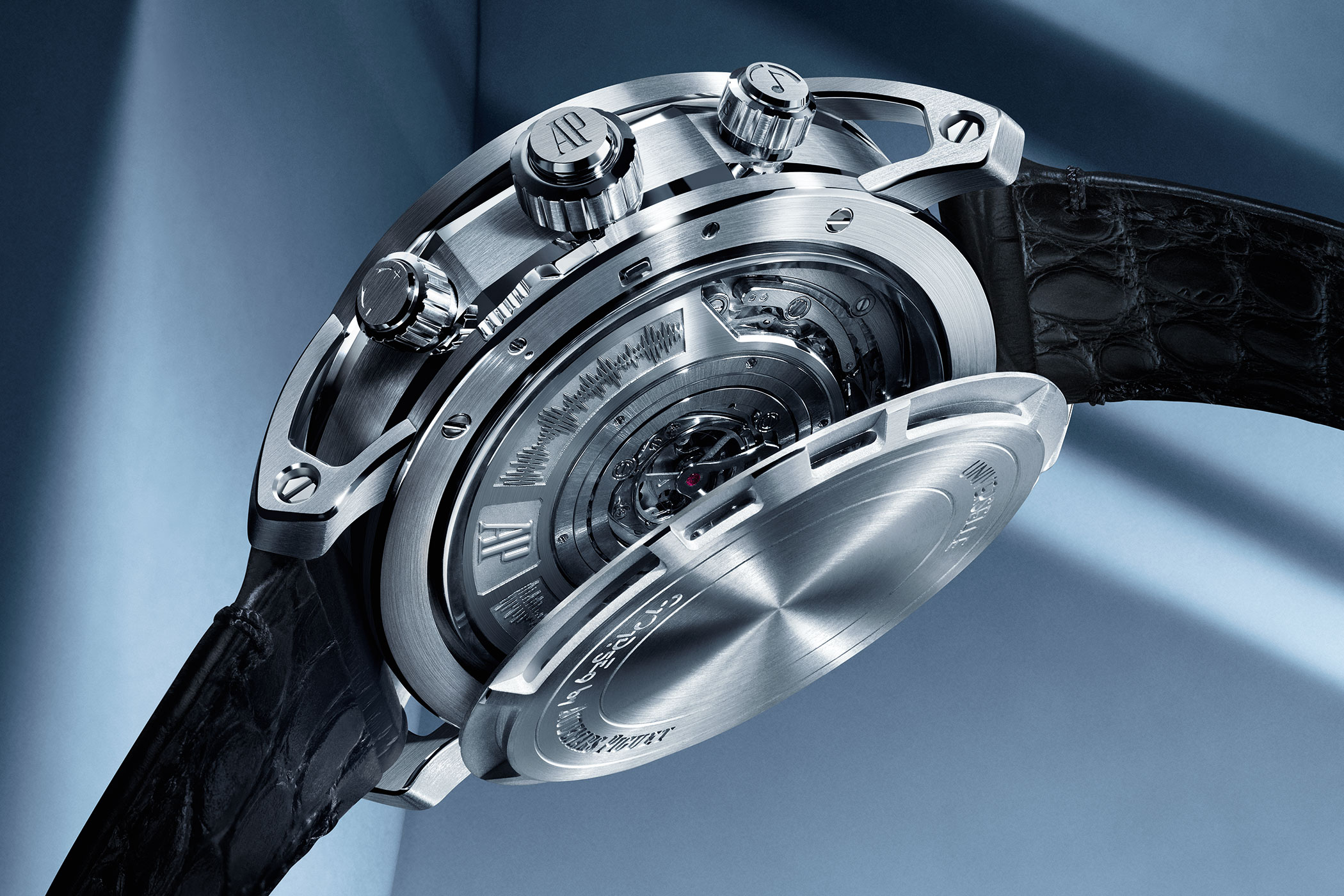
The 4 o’clock crown also corrects the month in sync with the year. While an aforementioned pusher operates the flyback chronograph’s zero resetting mechanism, the crown also enables the forward or backward correction of the month. The crown automatically returns to its neutral position after rotating it (up to 70°) in either direction. To avoid confusion, Audemars Piguet also engrave the crowns and push-pieces with small intuitive symbols to remind the wearer of their respective functions.
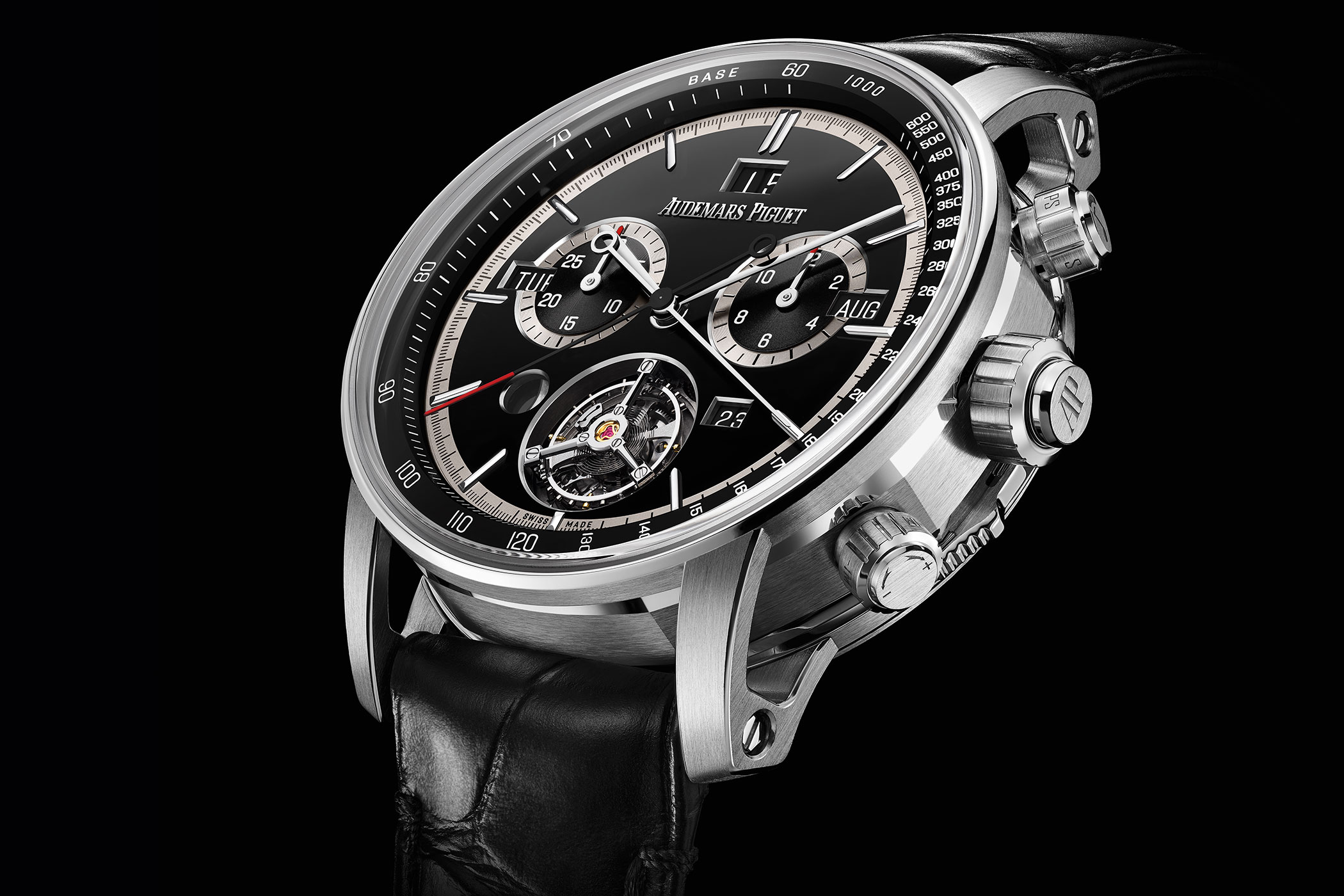
Price and availability
The four 2023 timepieces are all fitted on a black alligator strap and come with an additional black textured rubber-coated calfskin strap for a touch of sporty elegance. The price for the skeletonised Ref. 26398OR.OO.D002CR.01 and Ref. 26398BC.OO.D002CR.02 is 1.6 million CHF, while the price of the Ref. 26398BC.OO.D002CR.04 and Ref. 26398BC.OO.D002CR.01 is 1.45 million CHF.
